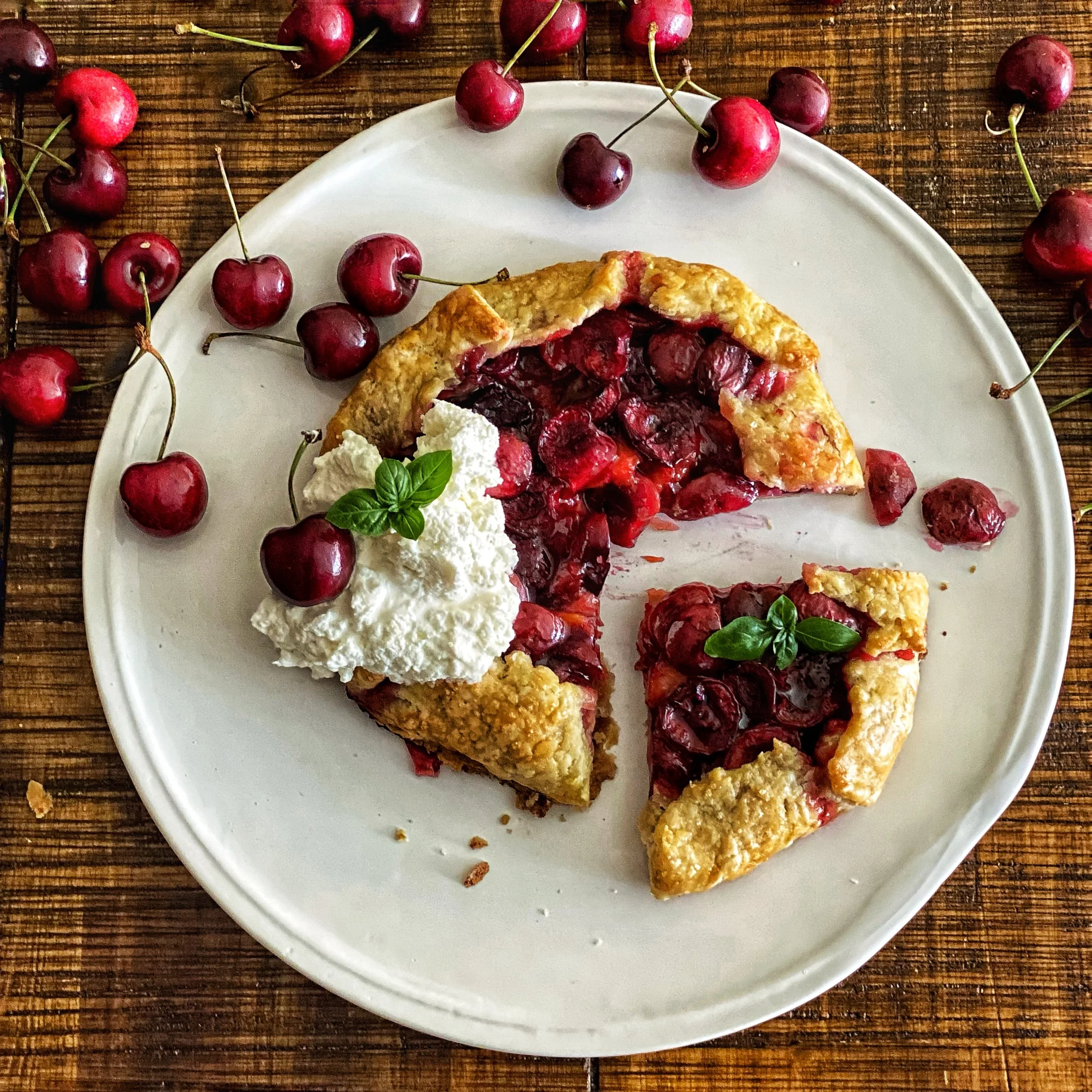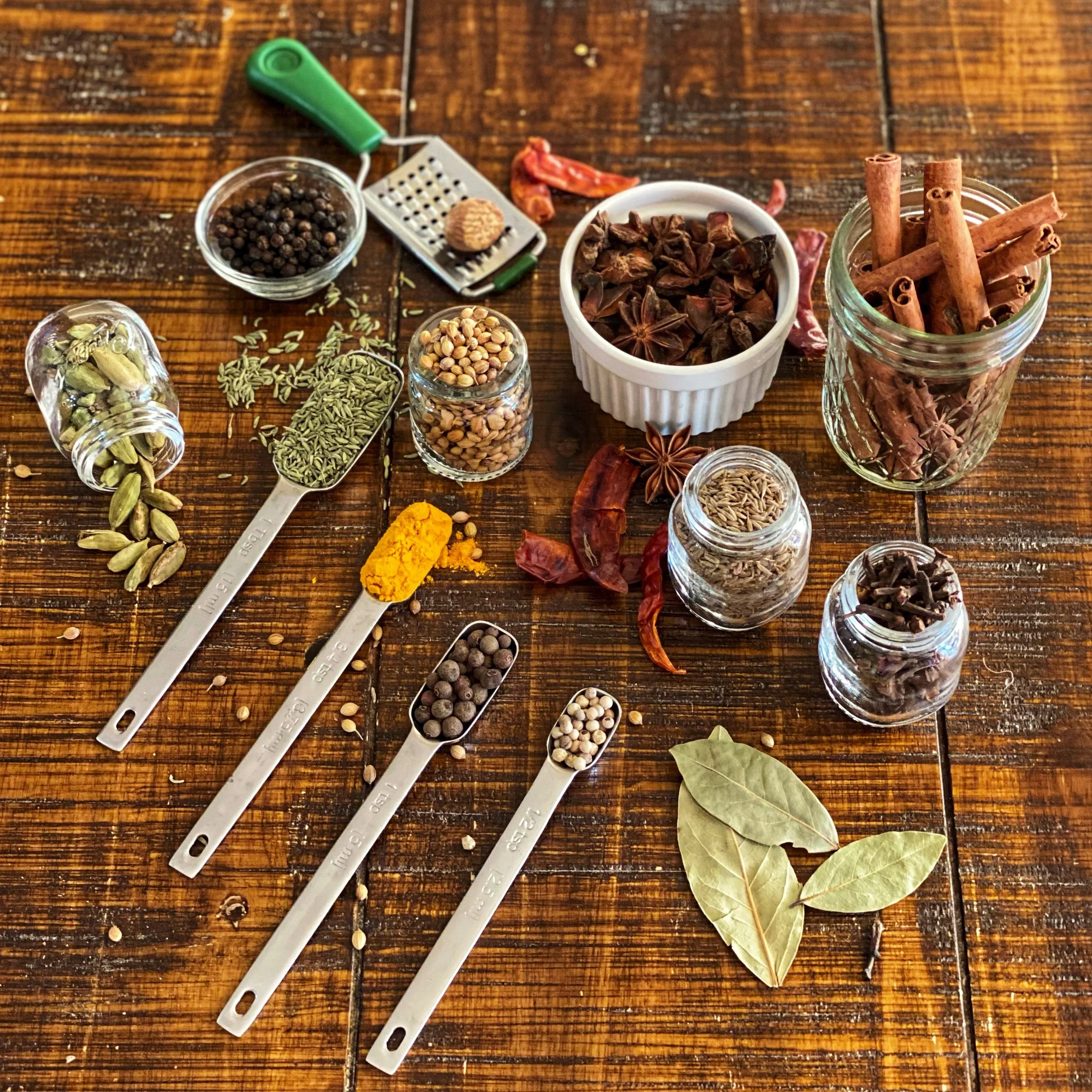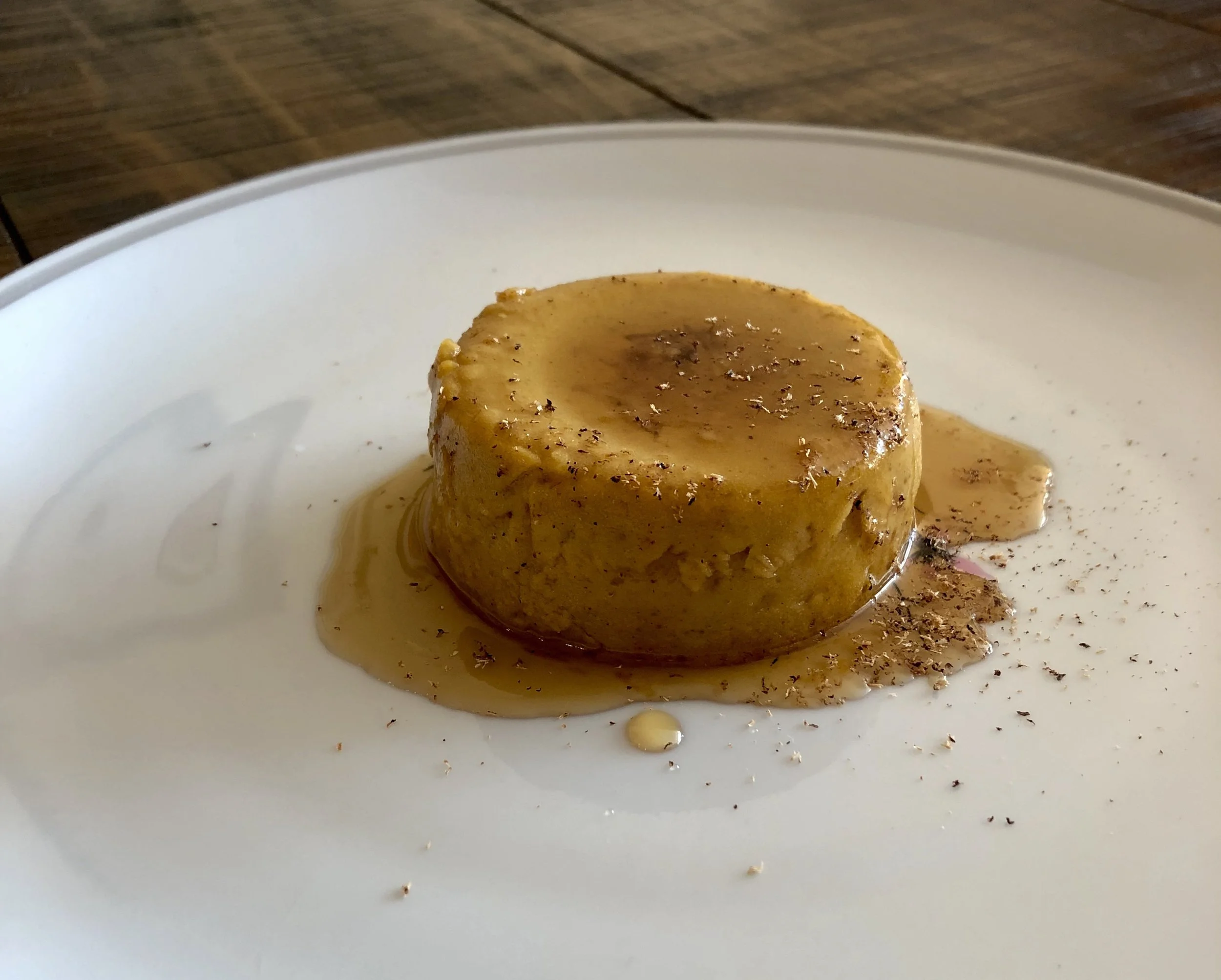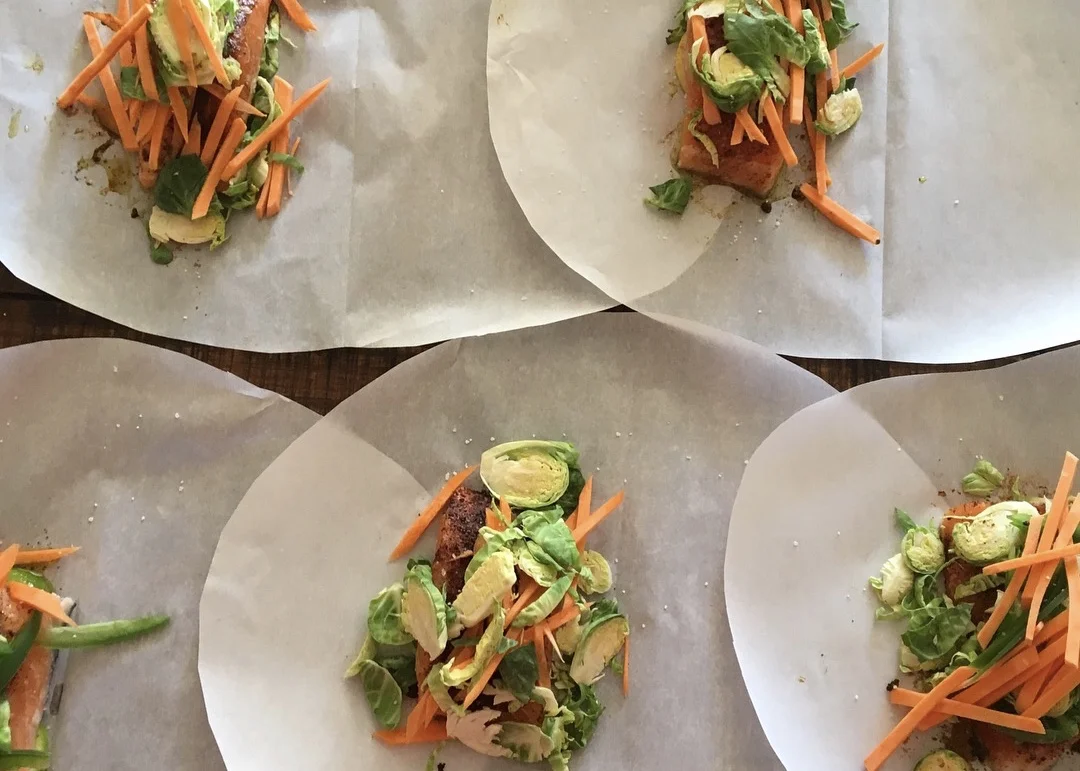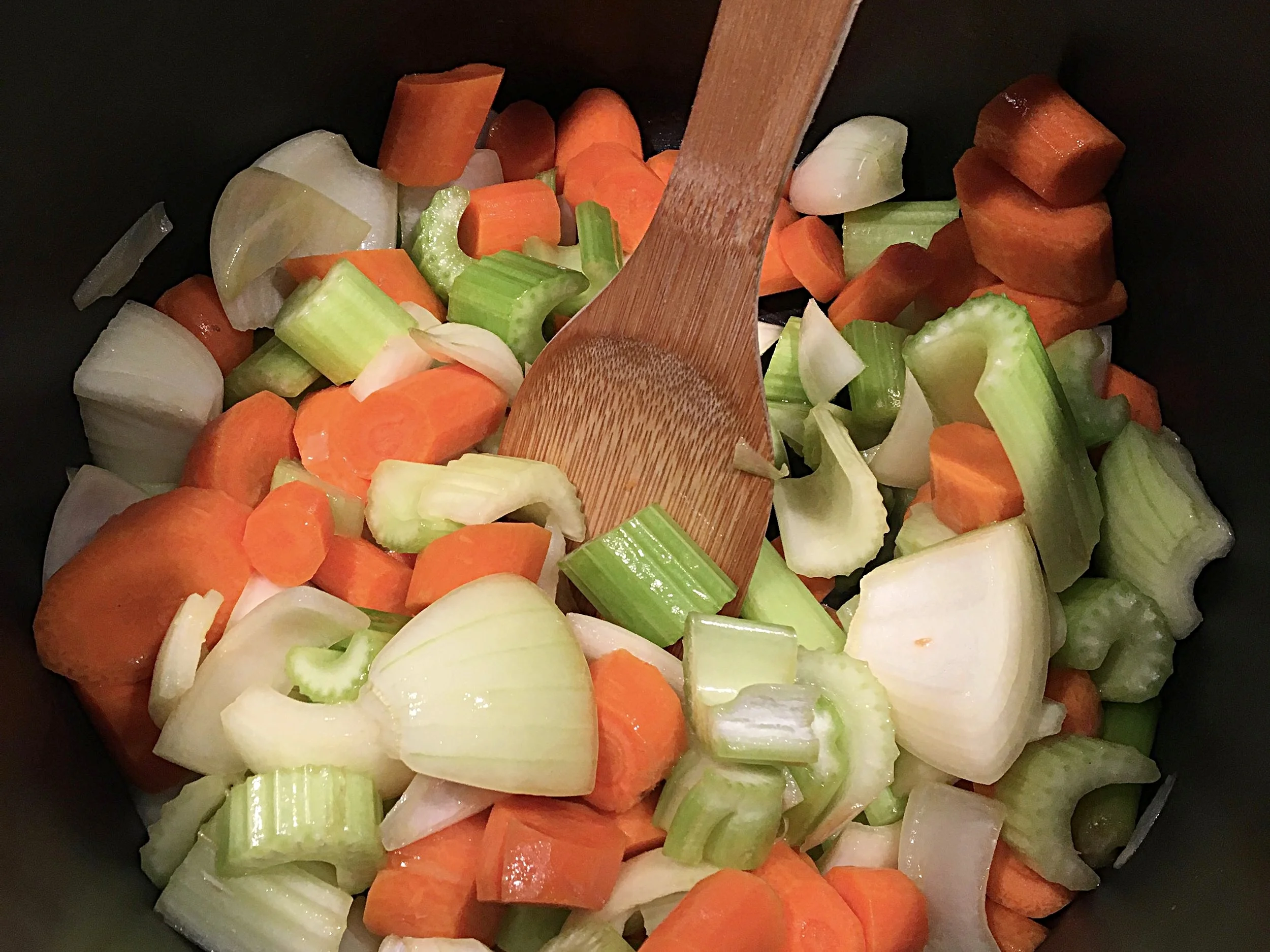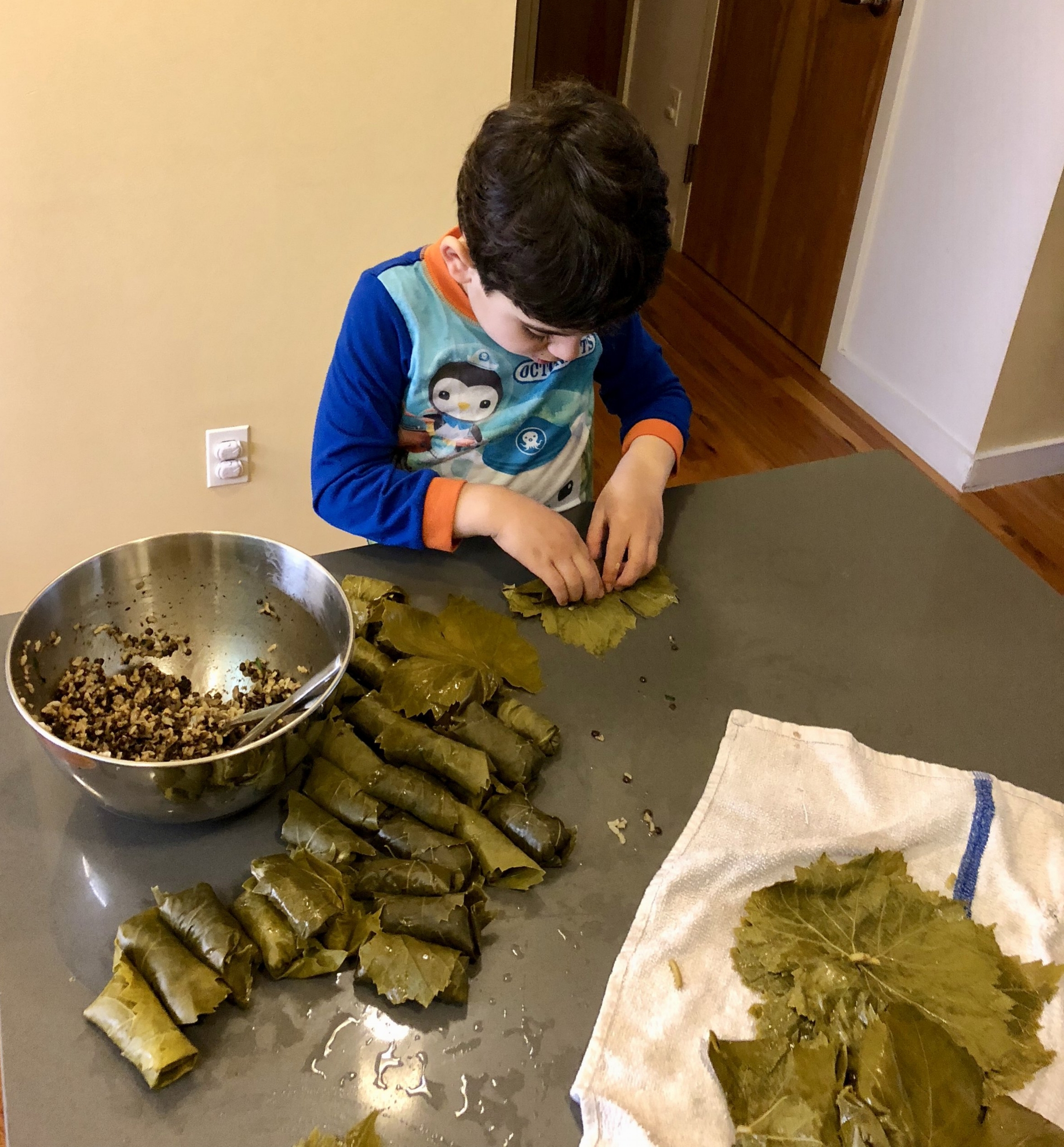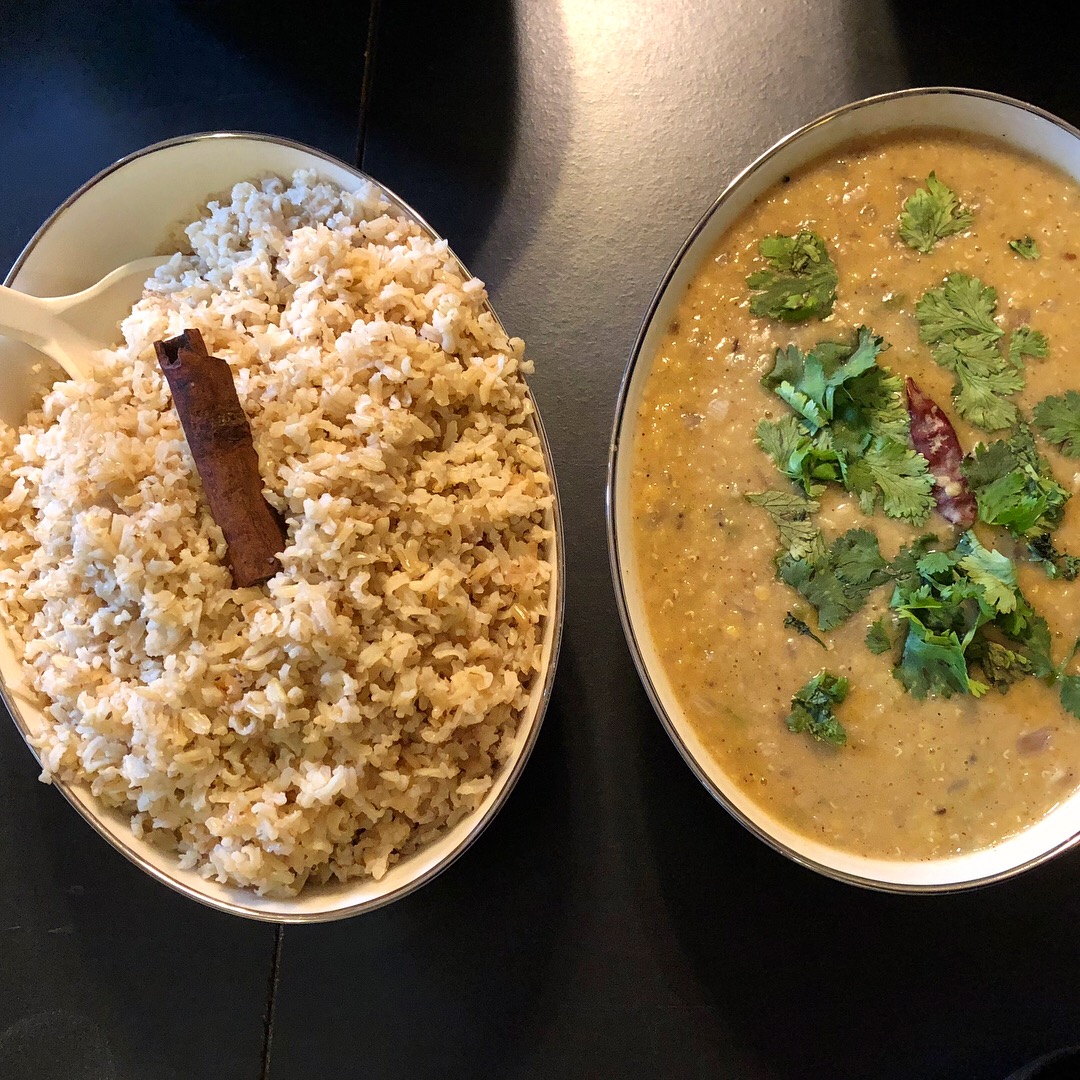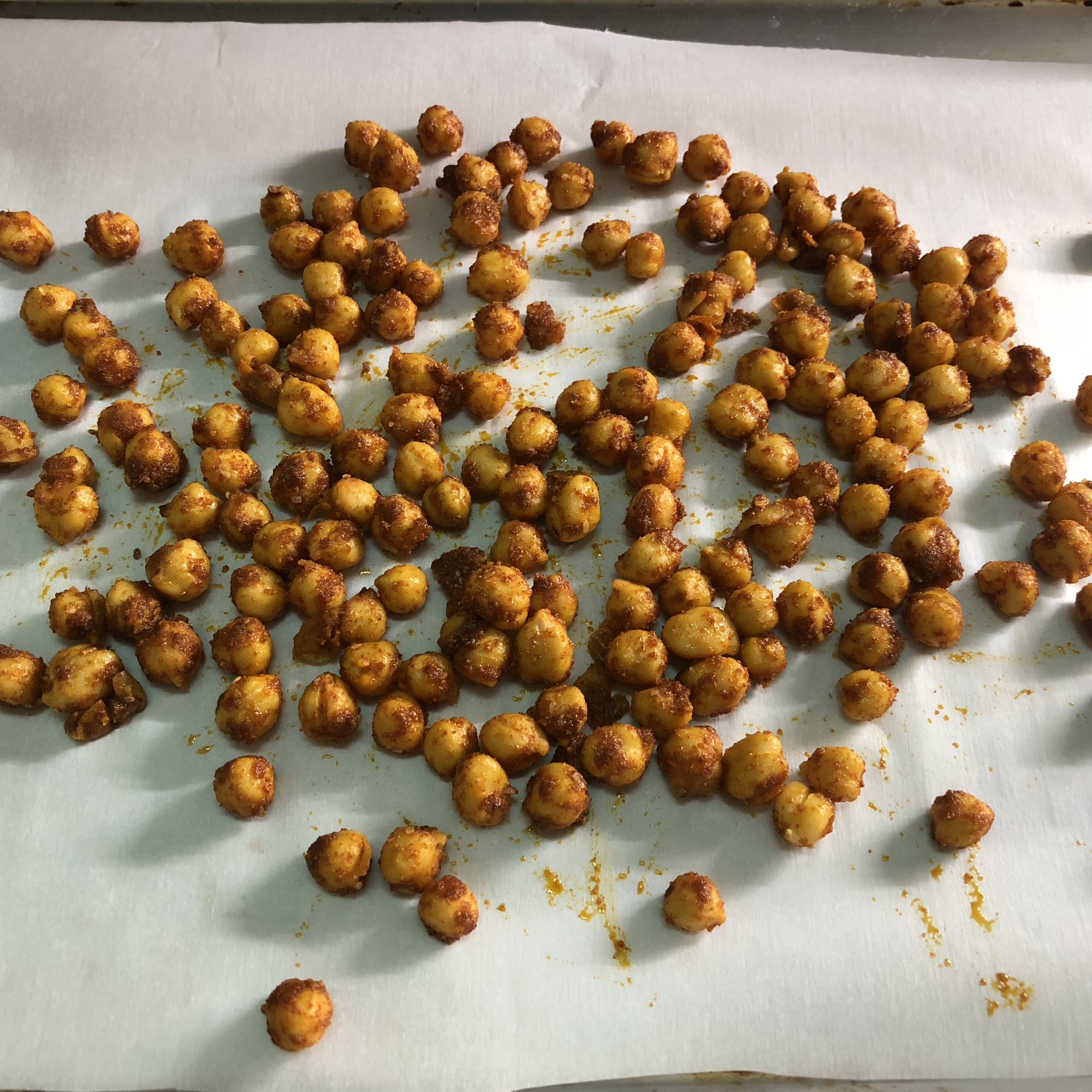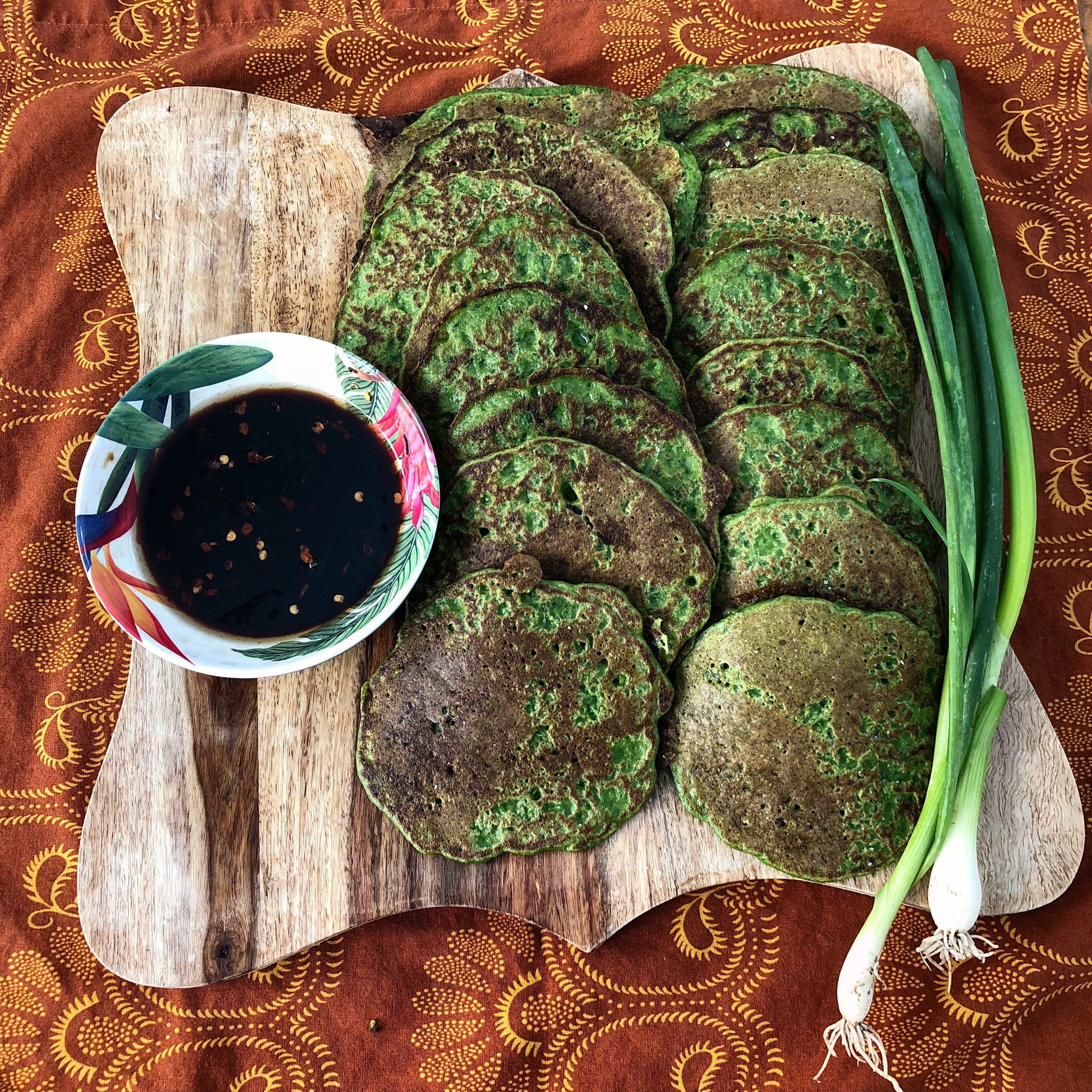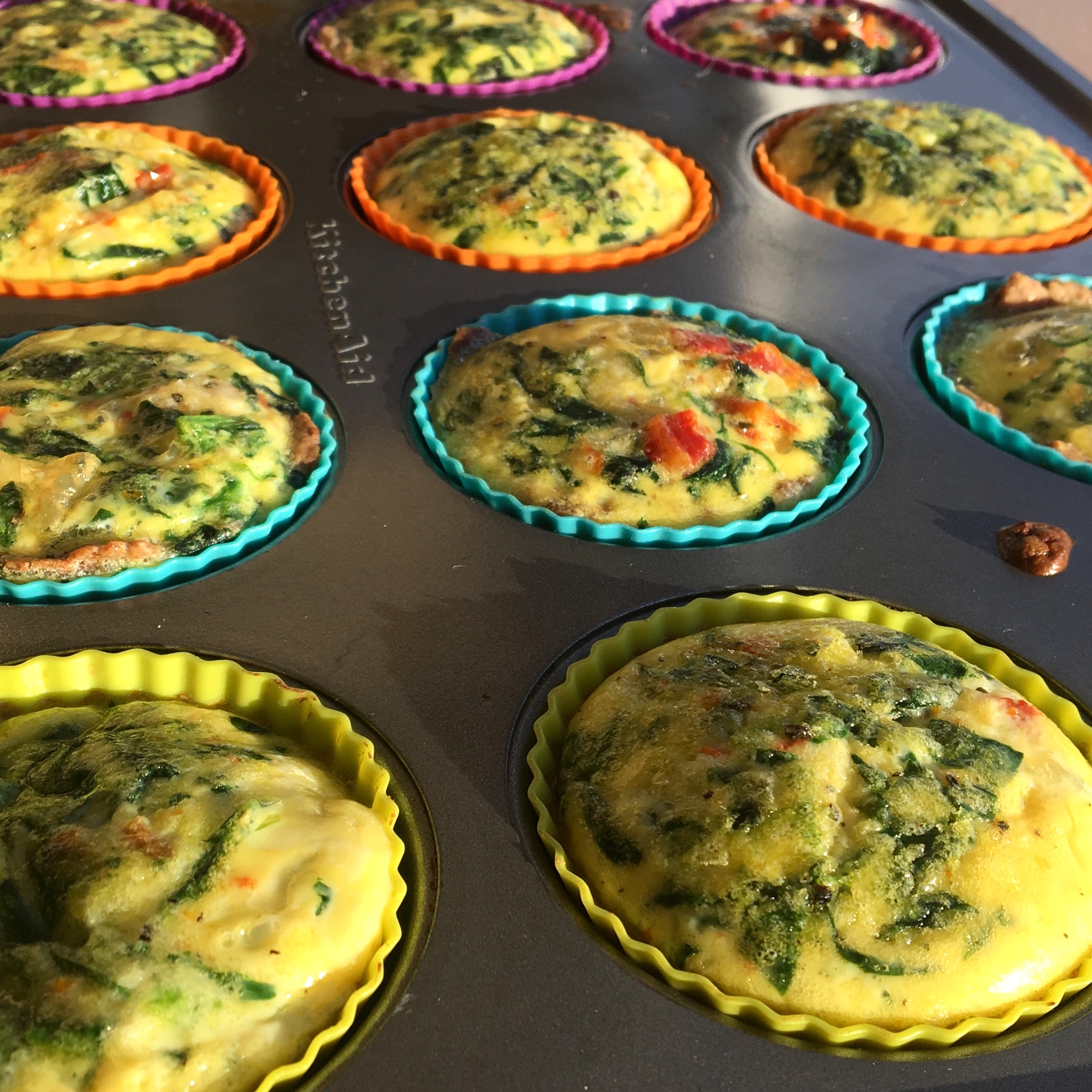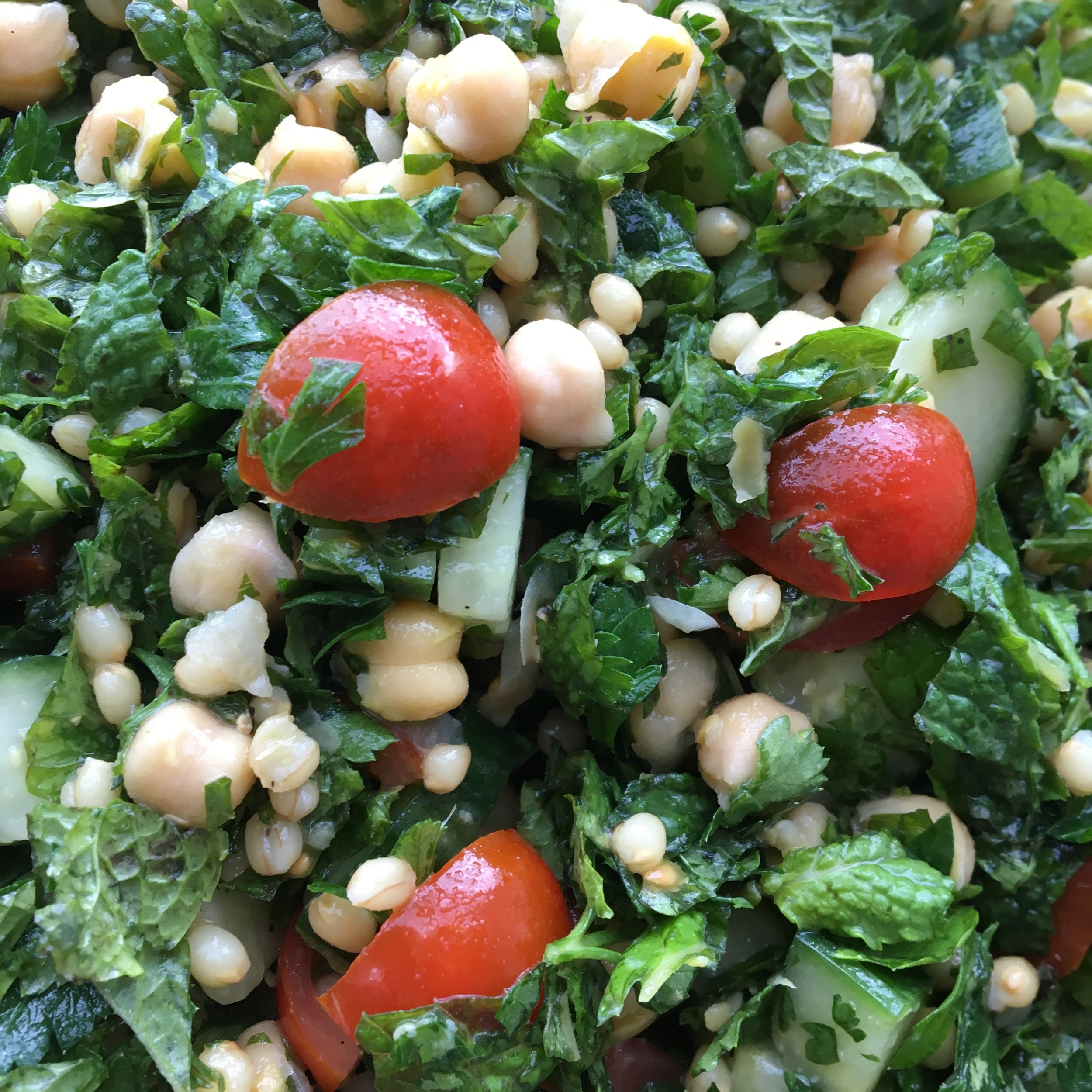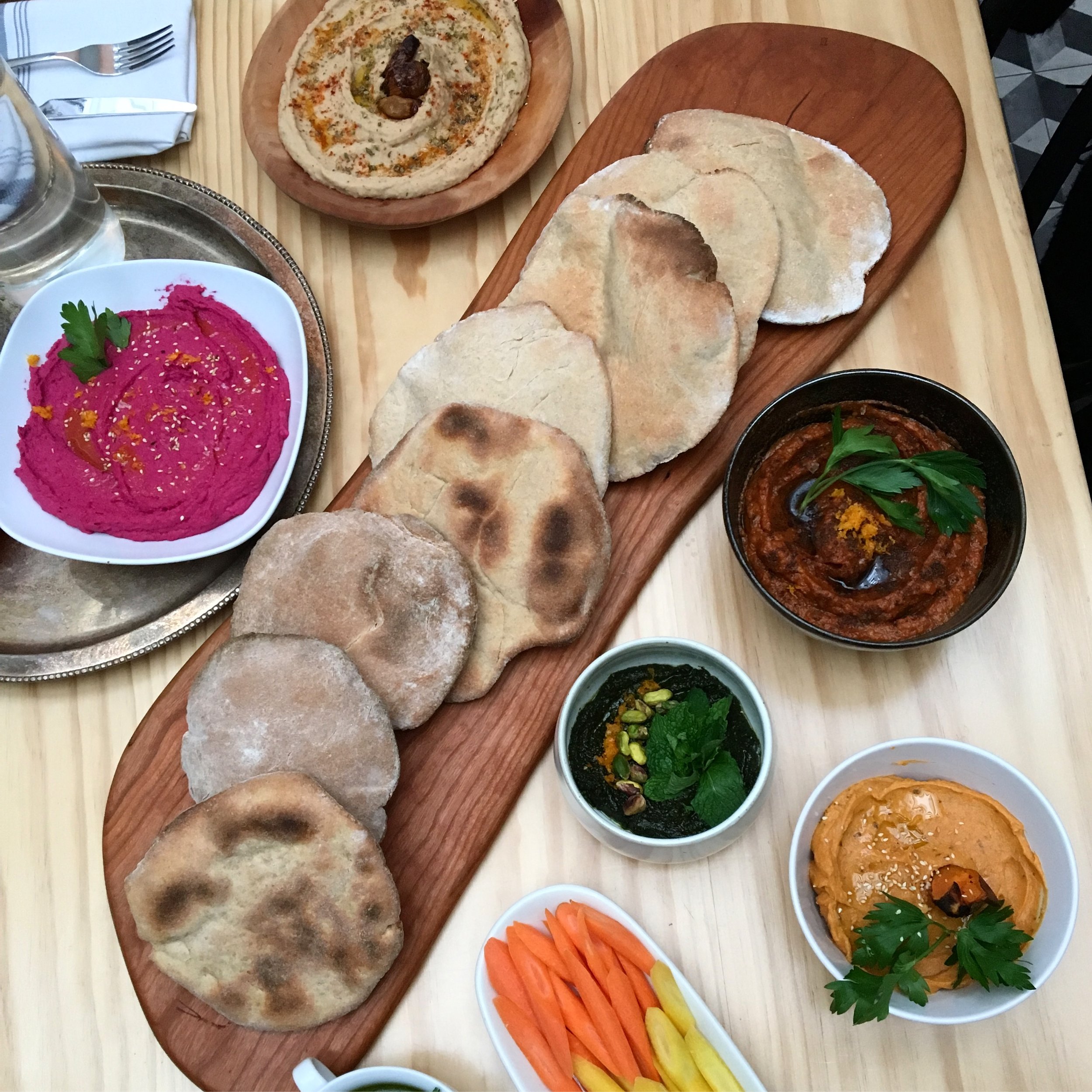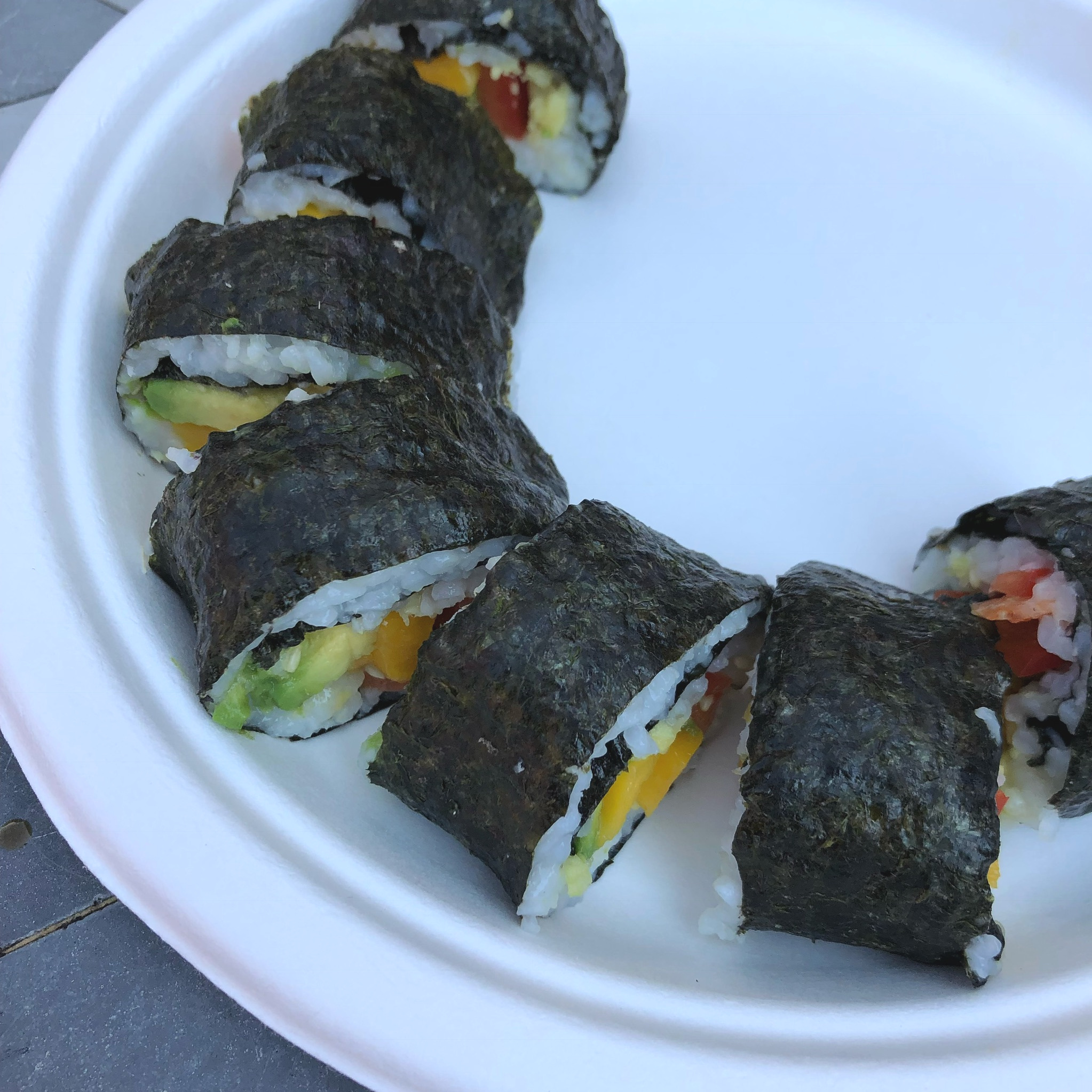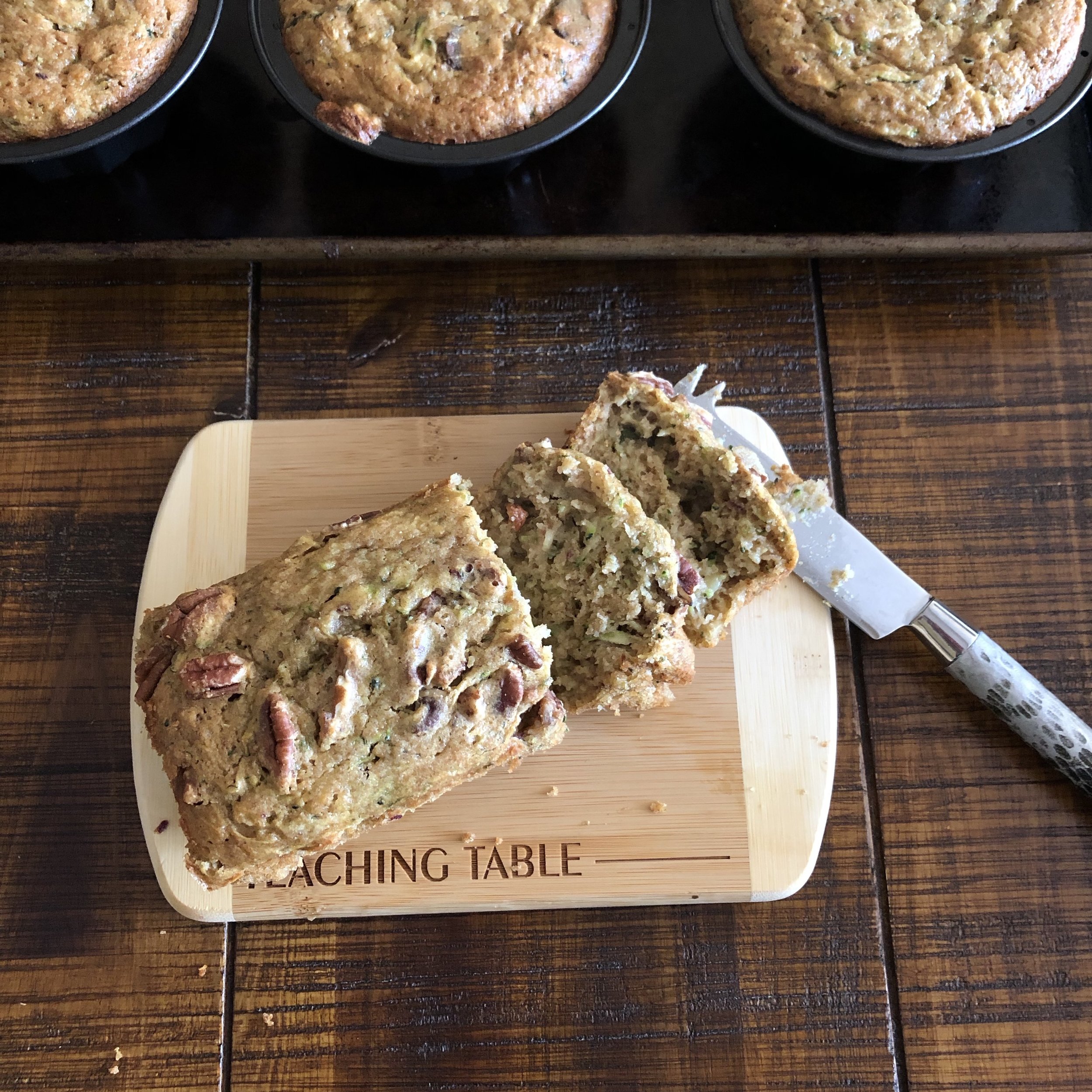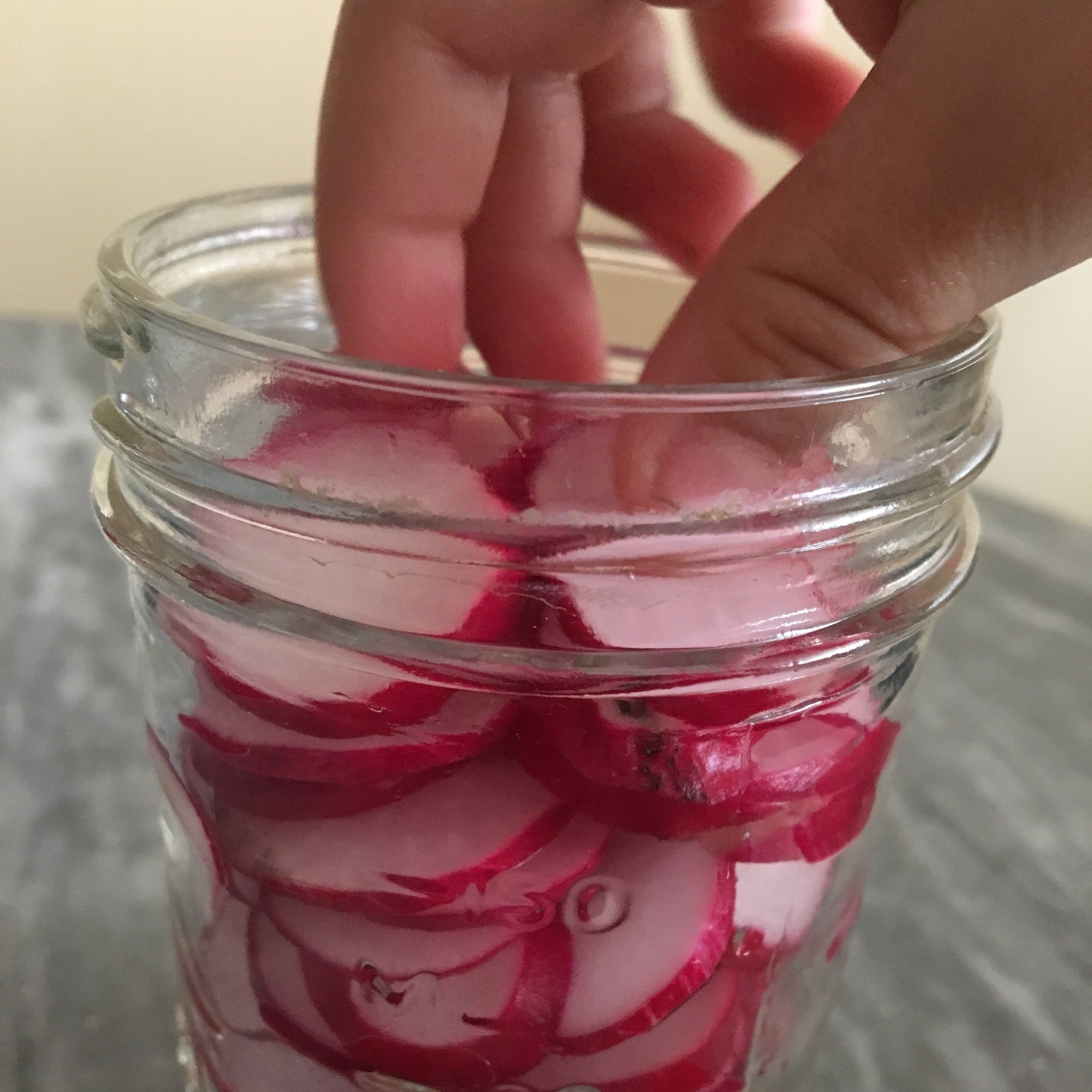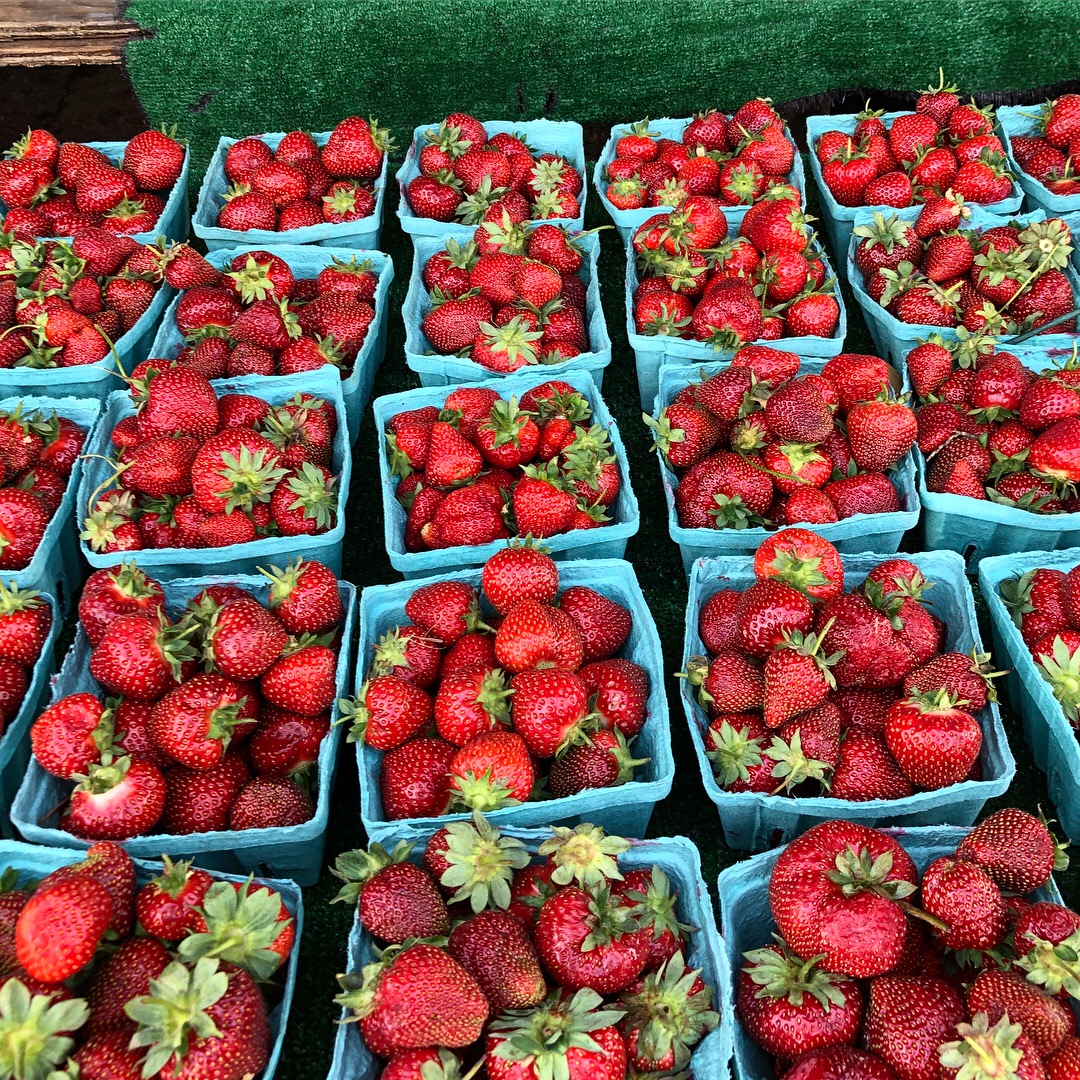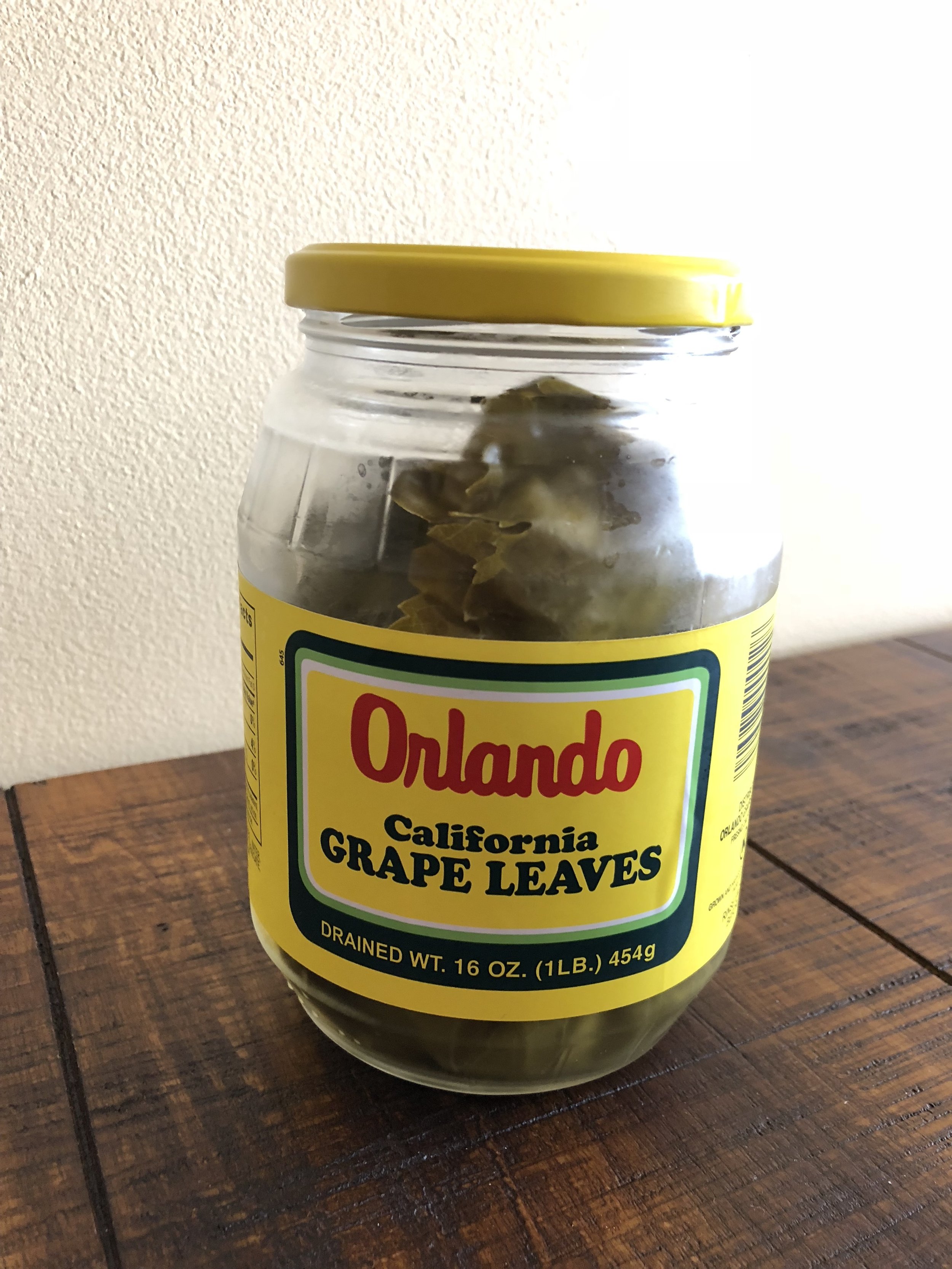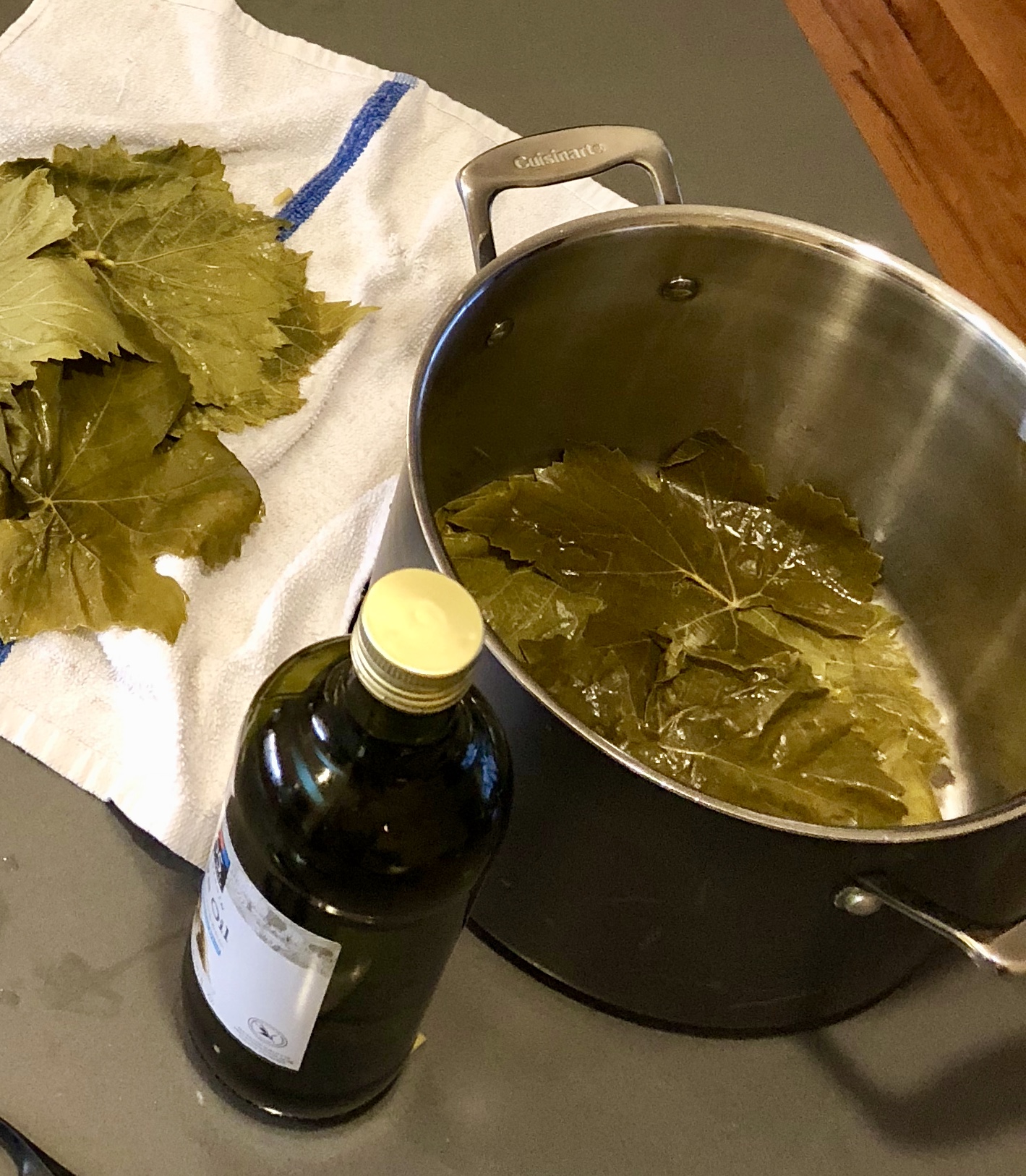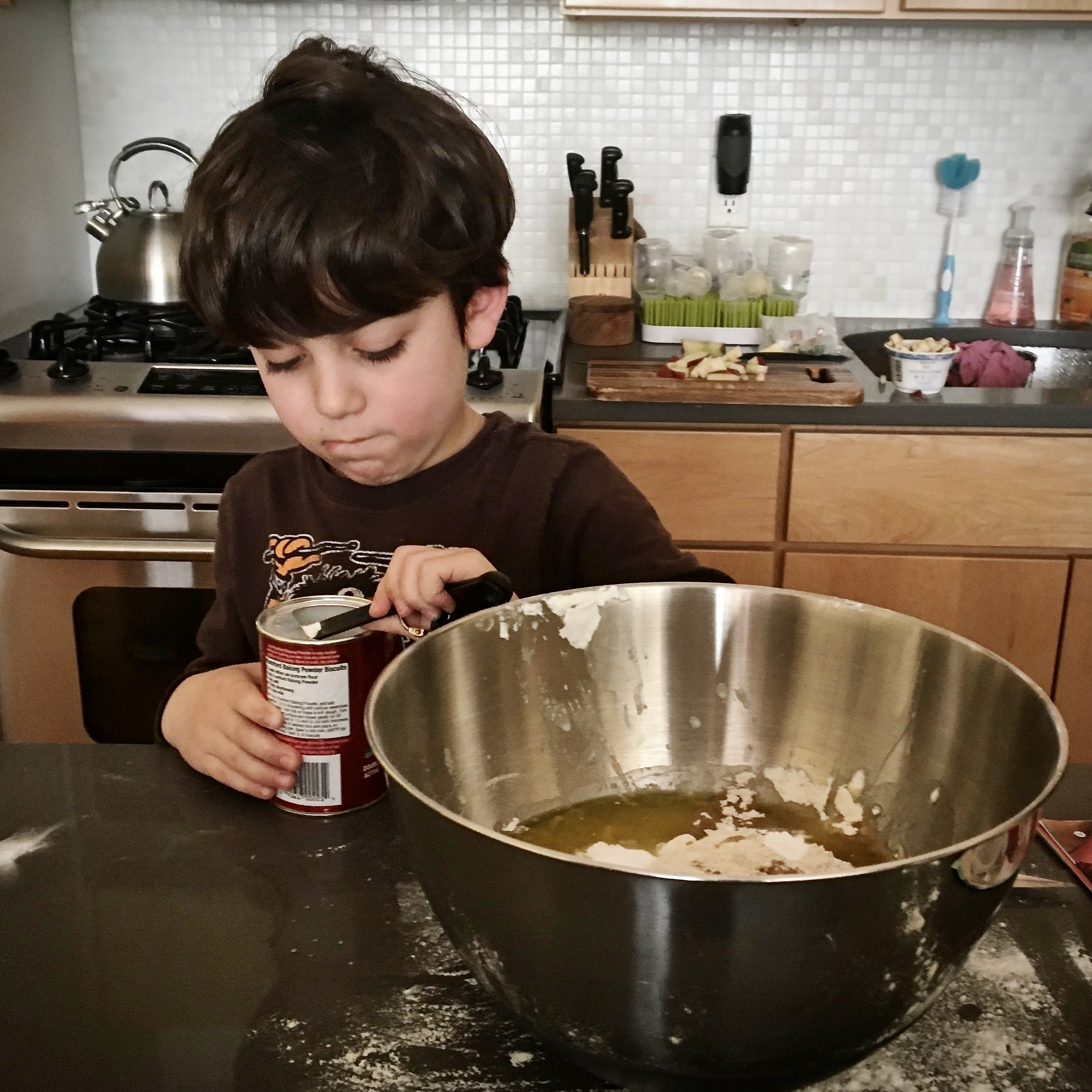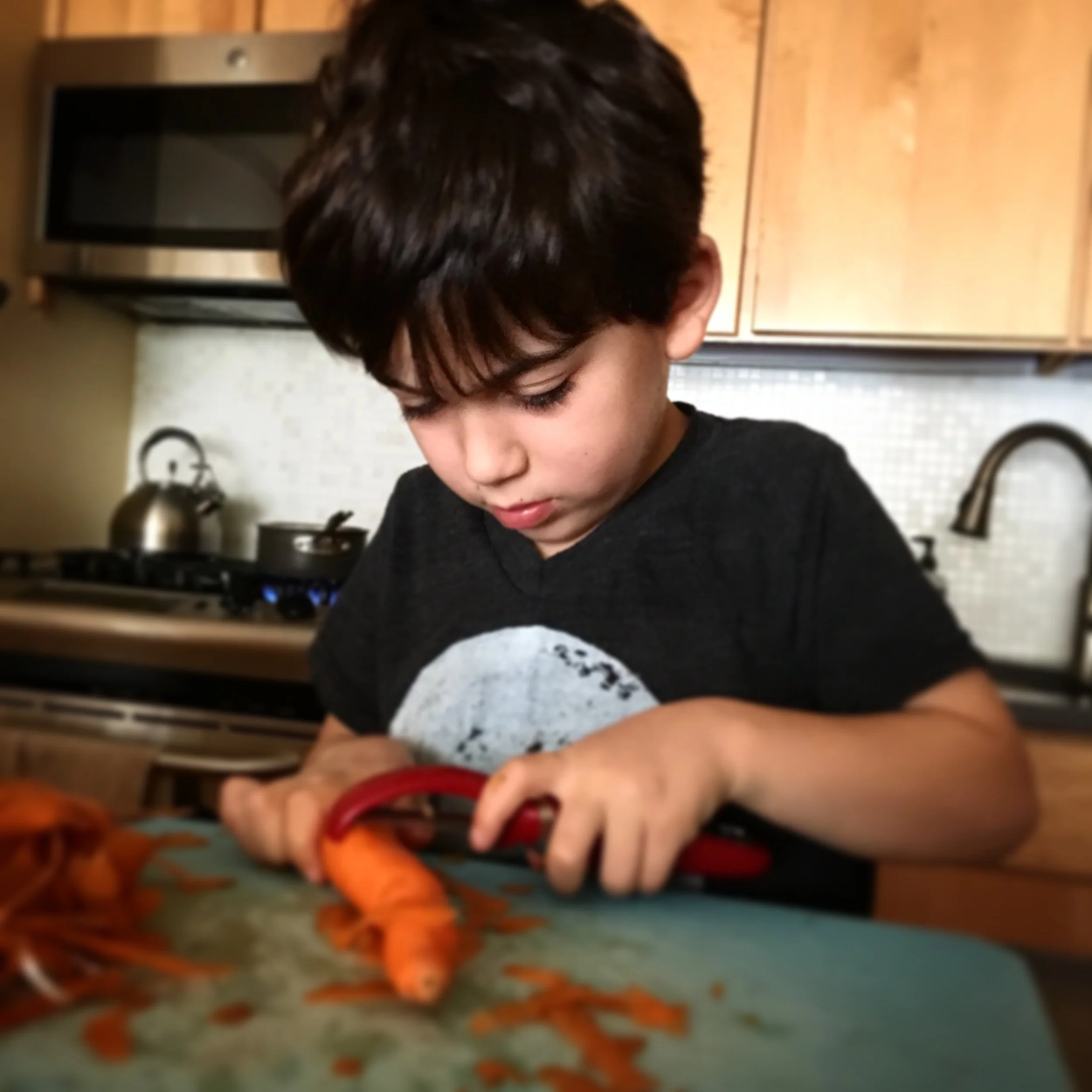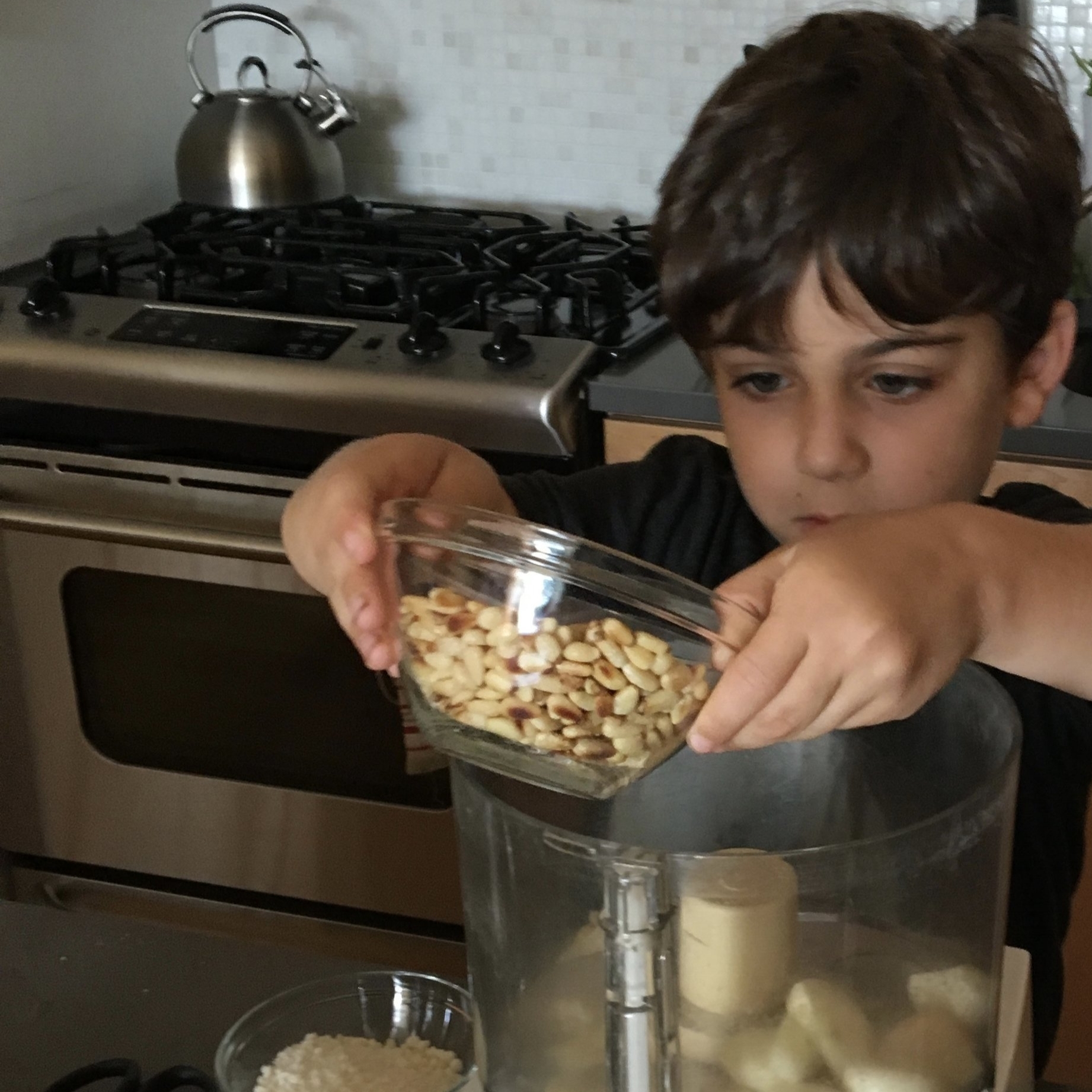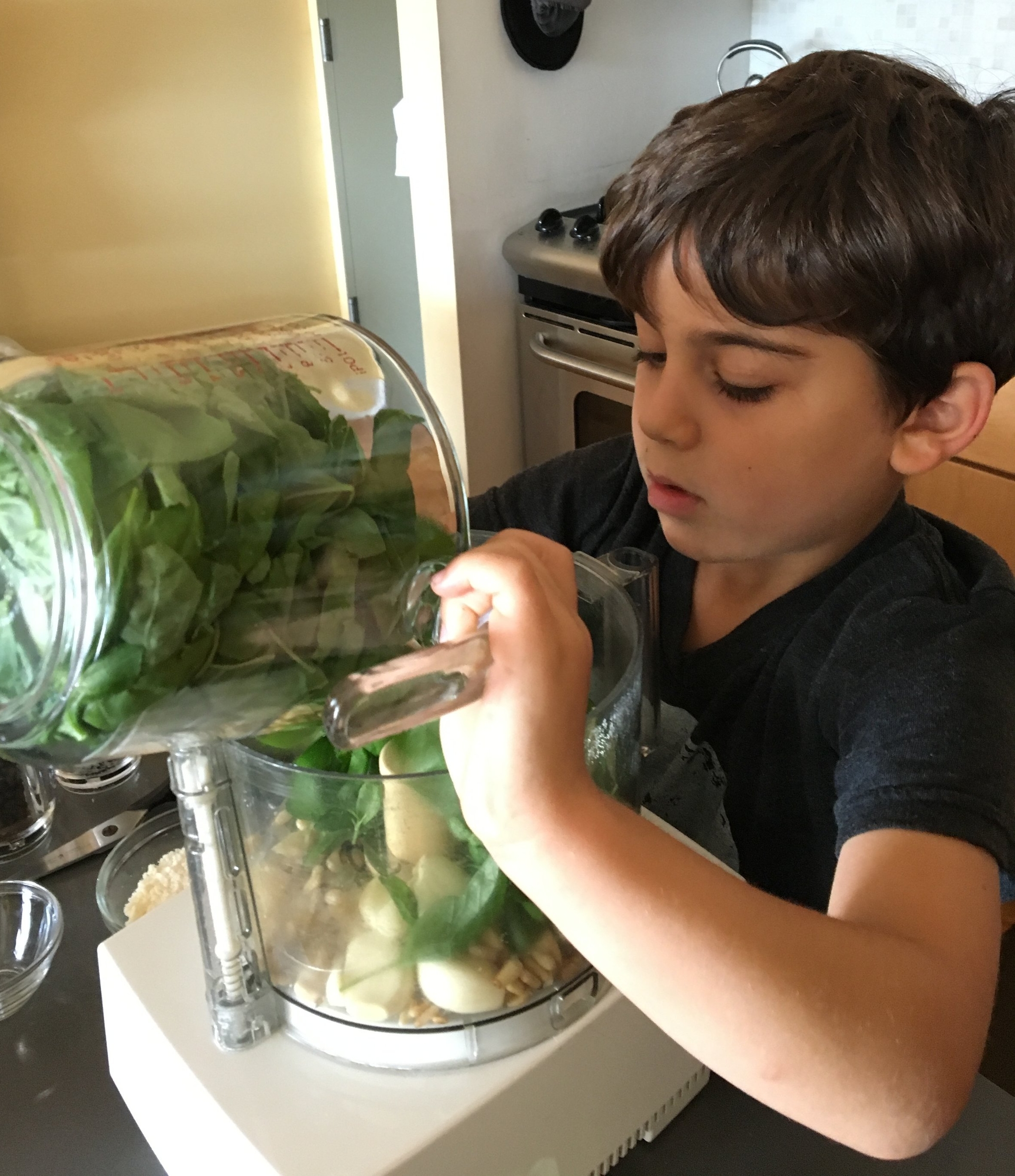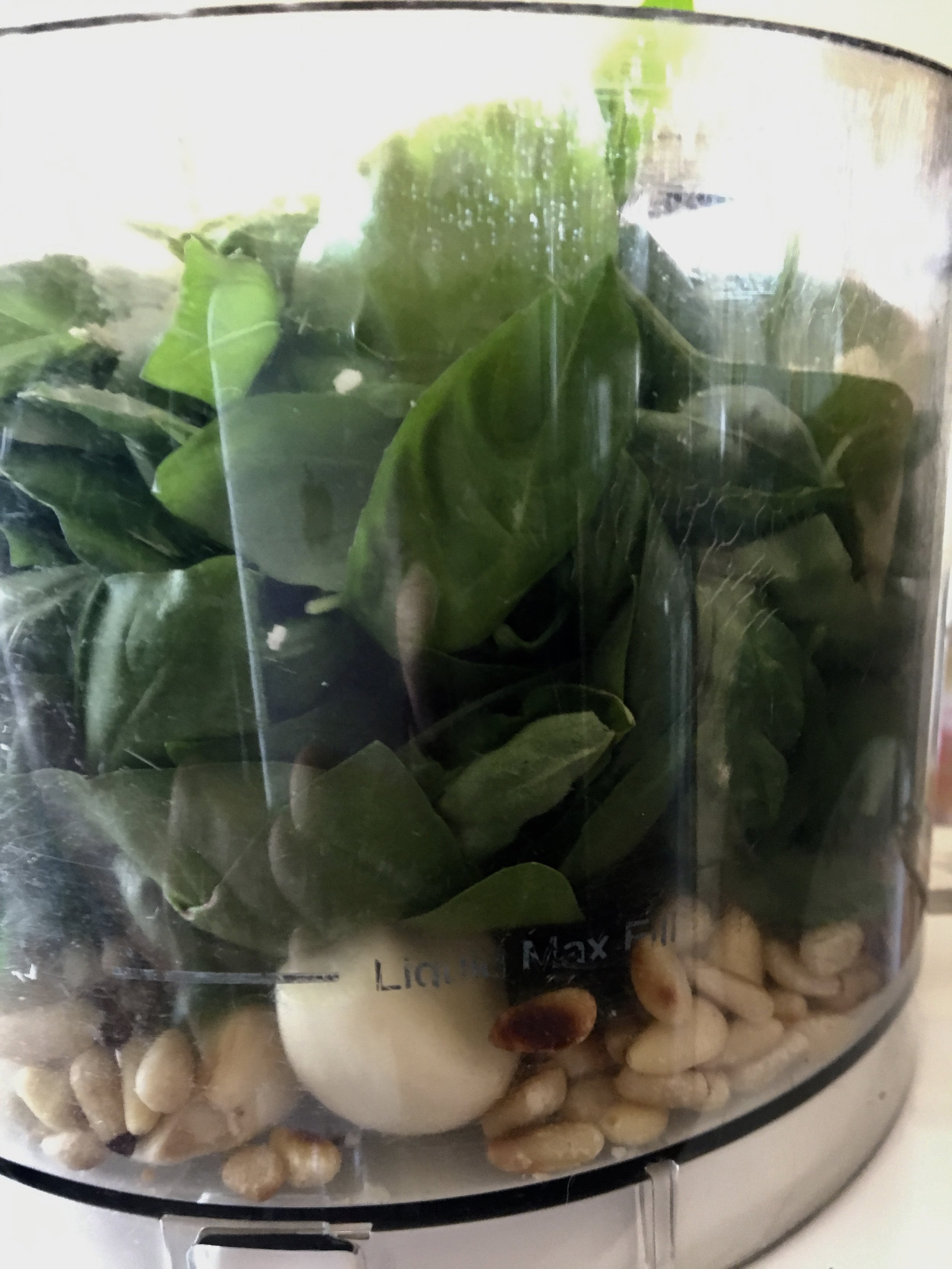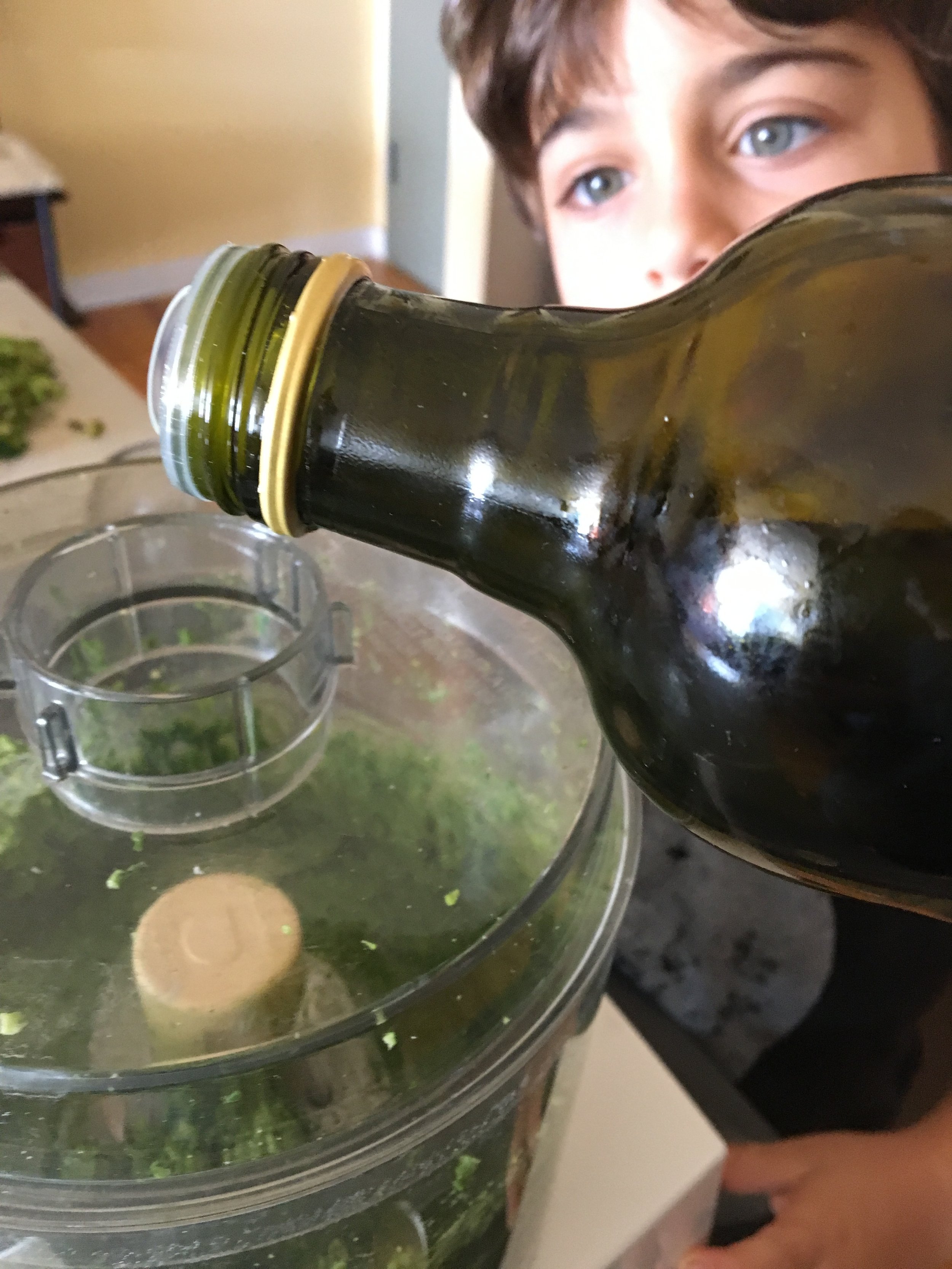Depending on who you’re selling this to, baked cauliflower mac and cheese could be a comforting way to eat vegetables or a rather nutritious version of macaroni and cheese. You choose.
Dyeing Eggs with Natural Colors
I first started exploring natural food dyes when trying to decorate my son’s birthday cake without using artificial colors from a little squeeze bottle. I knew there had to be ways to get vibrant colors out of actual foods. After discovering how to make pink, blue, green and yellow frosting, I moved on to coloring pasta, which is by far the most forgiving medium for natural food coloring. One can easily adjust moisture levels in pasta dough, which absorbs colors from solids, pastes, liquids and powders. Eggs, which are dyed in a quick bath of a colorful liquid, posed a new set of challenges.
Since we dunk eggs into liquid dyes, the pigments from colorful foods need to be transferred as much as possible to the water they are cooked in before straining off solids like shredded beets or dried flowers. And ground spice powders, like turmeric and paprika would ideally dissolve into the liquid. Not the case. Many formulas for natural dyes will tell you to use powdered turmeric for yellow. I love spices and figured I’d try others too like paprika, sumac, & chili powder. Why not?
Left: Speckled orange egg created with ground turmeric, ground paprika and oil based dye. Right: Blue polka dot egg created with butterfly pea flower dye and stickers.
It’s challenging to get clear vibrant color from these ground spices. First, ground spices are fat soluble, which means they work better with oil to break down and disperse their colors. But dunking an egg in oil sounded unorthodox and messy. So I followed the advice and simply simmered ground spices in boiling water for 20 minutes & then strained. The color was there, but it required a multi-hour, if not an overnight soak to dye eggs, and it left a little grit on the eggs, no matter how fine the strainer. So I revisited spices 101 and decided to bloom them first (or sauté them in a little bit of oil) before adding some water to make the liquid dye. The colors were certainly more vibrant and adhered in under 20 minutes, but the oil left a splotched rather than smooth finish on the egg - check out the orange speckled egg made from a combination of paprika and turmeric. Up next, I will attempt a dye made 100% from the ground spices bloomed in oil.
Fresh turmeric root. Grated.
So, how do you get the best clear liquid yellow dye? If you have it available, fresh grated turmeric root works best. I simmered it in water just like the other fresh vegetables, and then strained off the solids. While the turmeric root itself appears orange, the liquid it creates makes a beautiful soft and natural yellow. If fresh turmeric root is not available, shredded golden beets work as well.
Top left: blue butterfly pea flower dye; Top right: yellow turmeric root dye; Bottom: Green dye made from combining
I had such success adding greens of all shades and varieties — sautéed, steamed, juiced and blanched spinach, kale, parsley & chard — to pasta dough & frosting that I didn’t expect it to be so challenging to dye eggs green. And, green eggs & ham, right? Wrong. For egg dying, not only do the green colors become terribly diluted in liquid, but the key ingredient required for getting dye to adhere to eggs destroys the green pigments. We add vinegar to egg dyes to create an acidic mixture that reacts with the calcium in the egg shell, allowing colors to be absorbed. While this acid creates vivid blues and bright pinks, any acid (lemon juice, wine, tomato sauce) deteriorates green rapidly and transforms it to an unappetizing olive or brown. The answer? Create vibrant greens by combining yellow and blue dye immediately before dunking eggs.
How to Produce a Rainbow of Natural Dyes
To make most types of natural liquid dye:
Boil or steep vegetables (1 cup), spices (1 tablespoon), or dried flowers or teas (1/2 cup) in water (1 1/2 - 2 cups) for 10-20 minutes.
Strain through a fine mesh strainer. Discard, compost or reuse the solids.
Add vinegar and stir. Use ~1 tablespoon vinegar to 1 cup liquid dye. Use less for acidic mixtures like berries cooked in lemon juice.
Steep: to soak (food, tea, etc.) in hot water so as to extract its flavor or color or to soften or reconstitute it
Boil: to cook (food) in boiling water over a heat source
Recommended formulas
For a quick reference list of formulas for these and a full rainbow of dyes, click here.


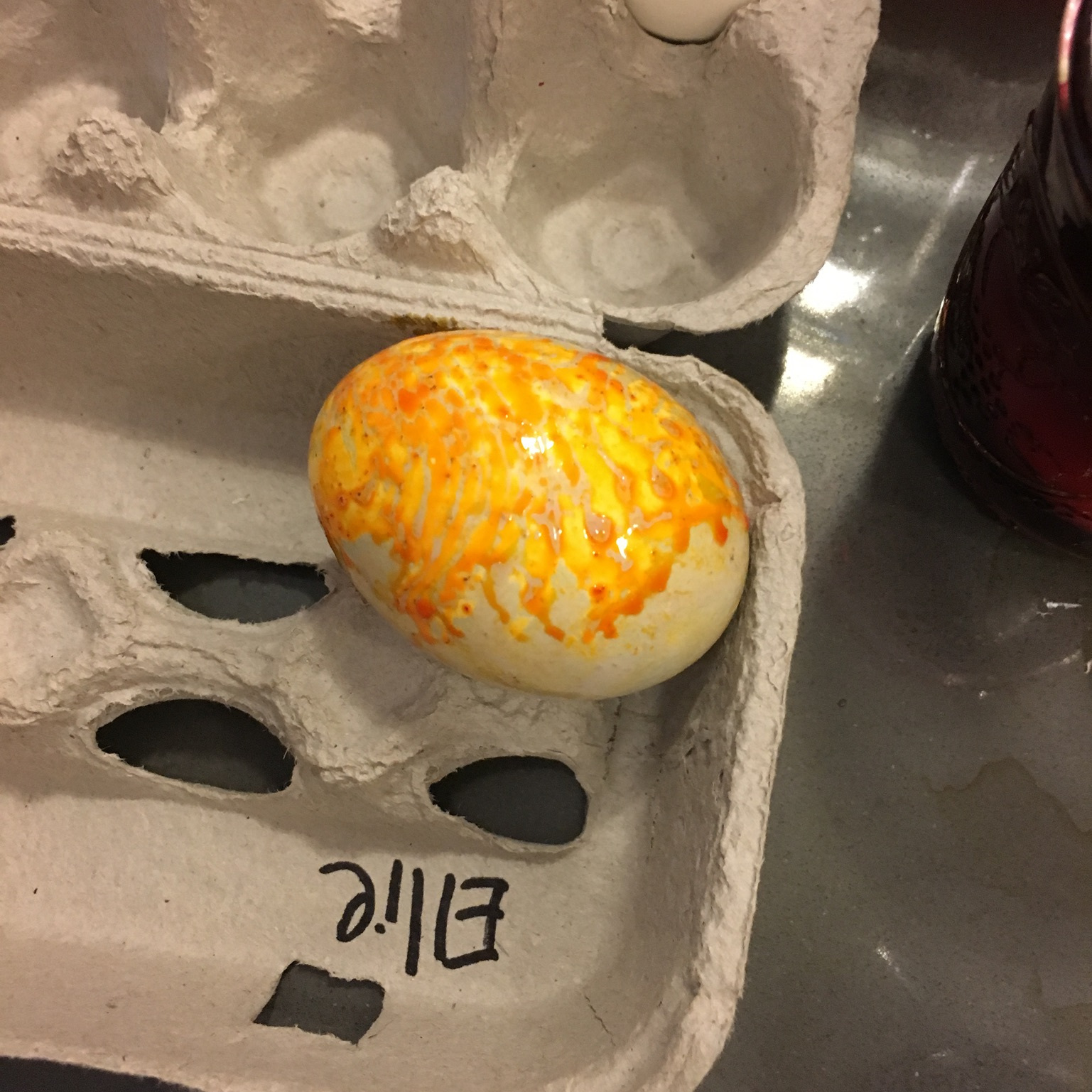
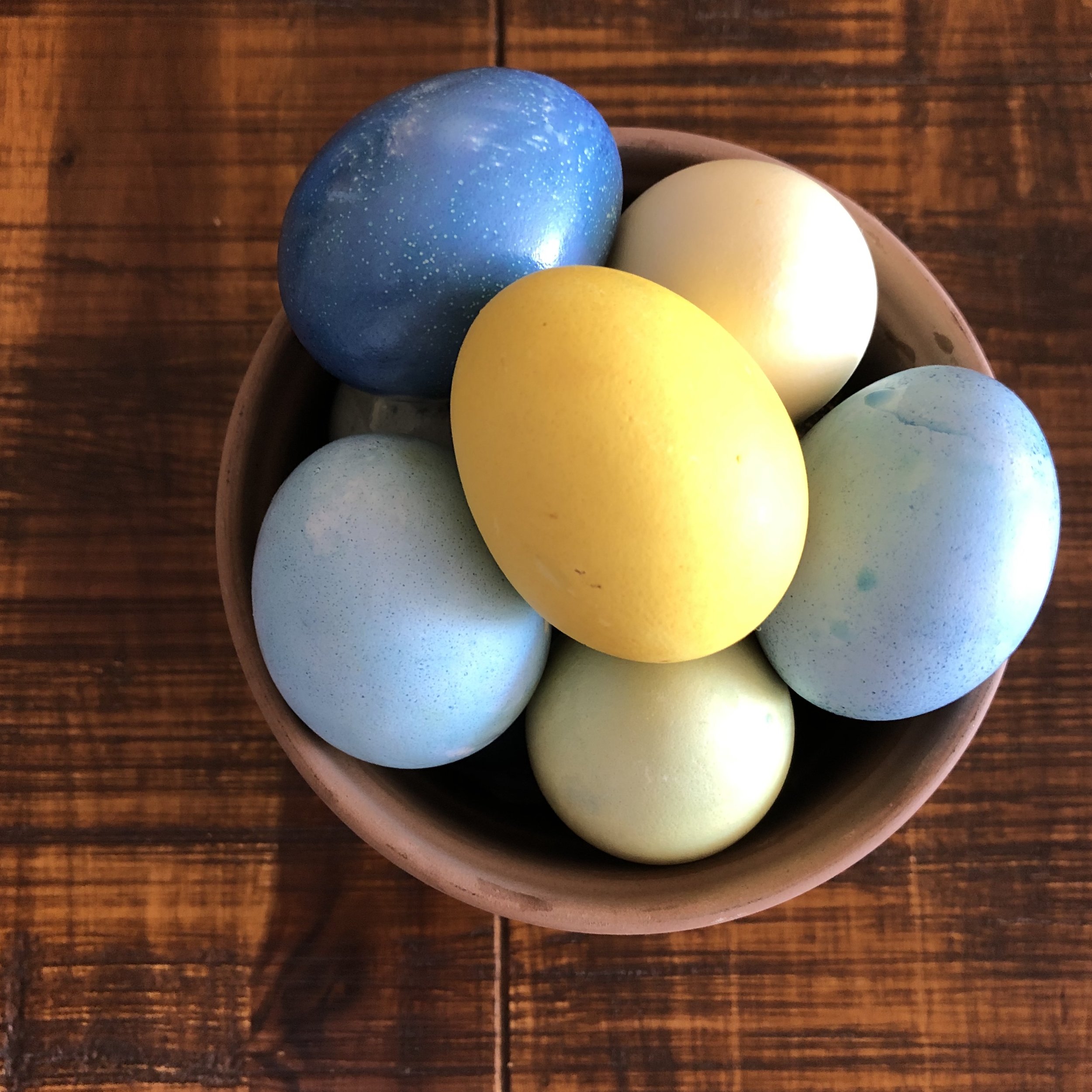
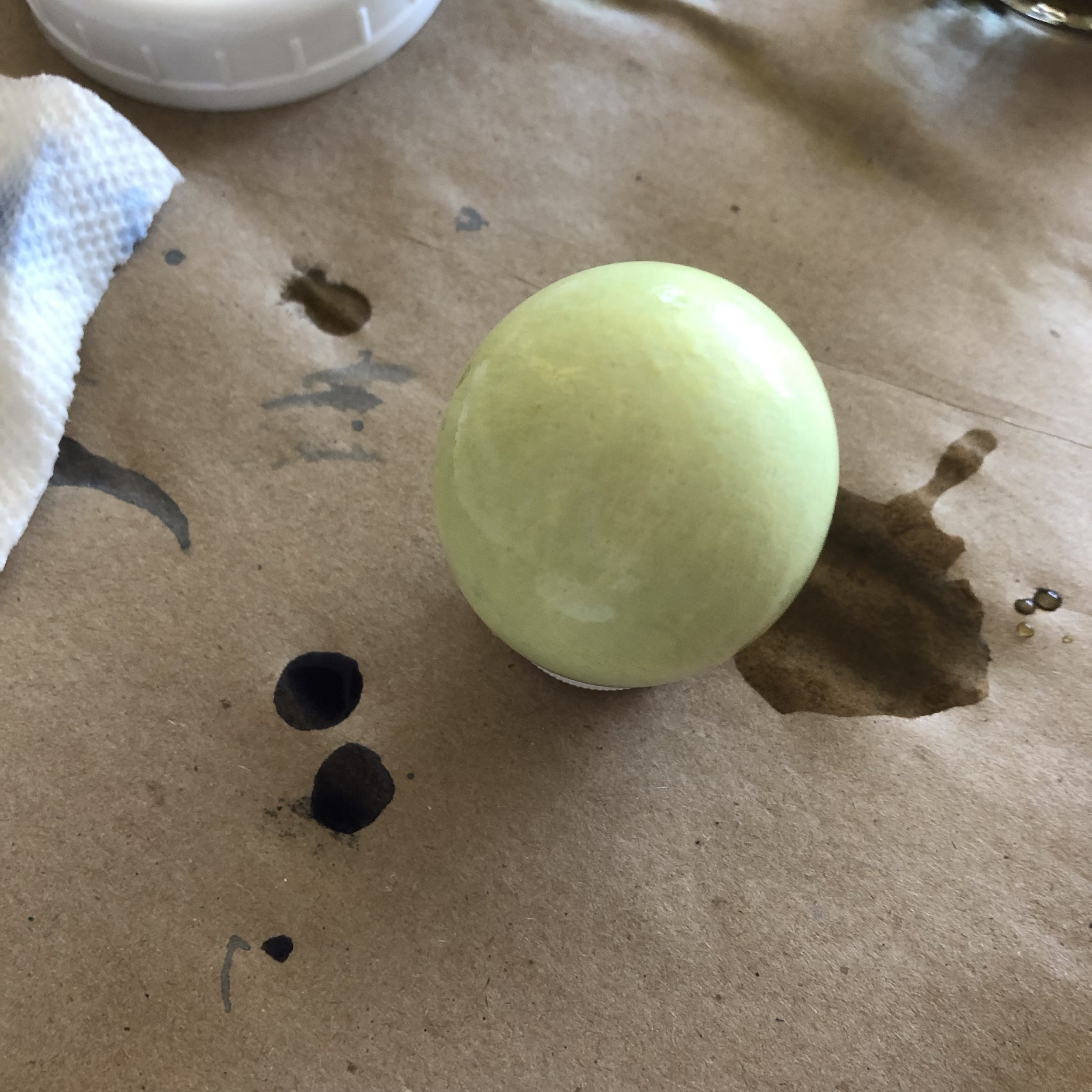
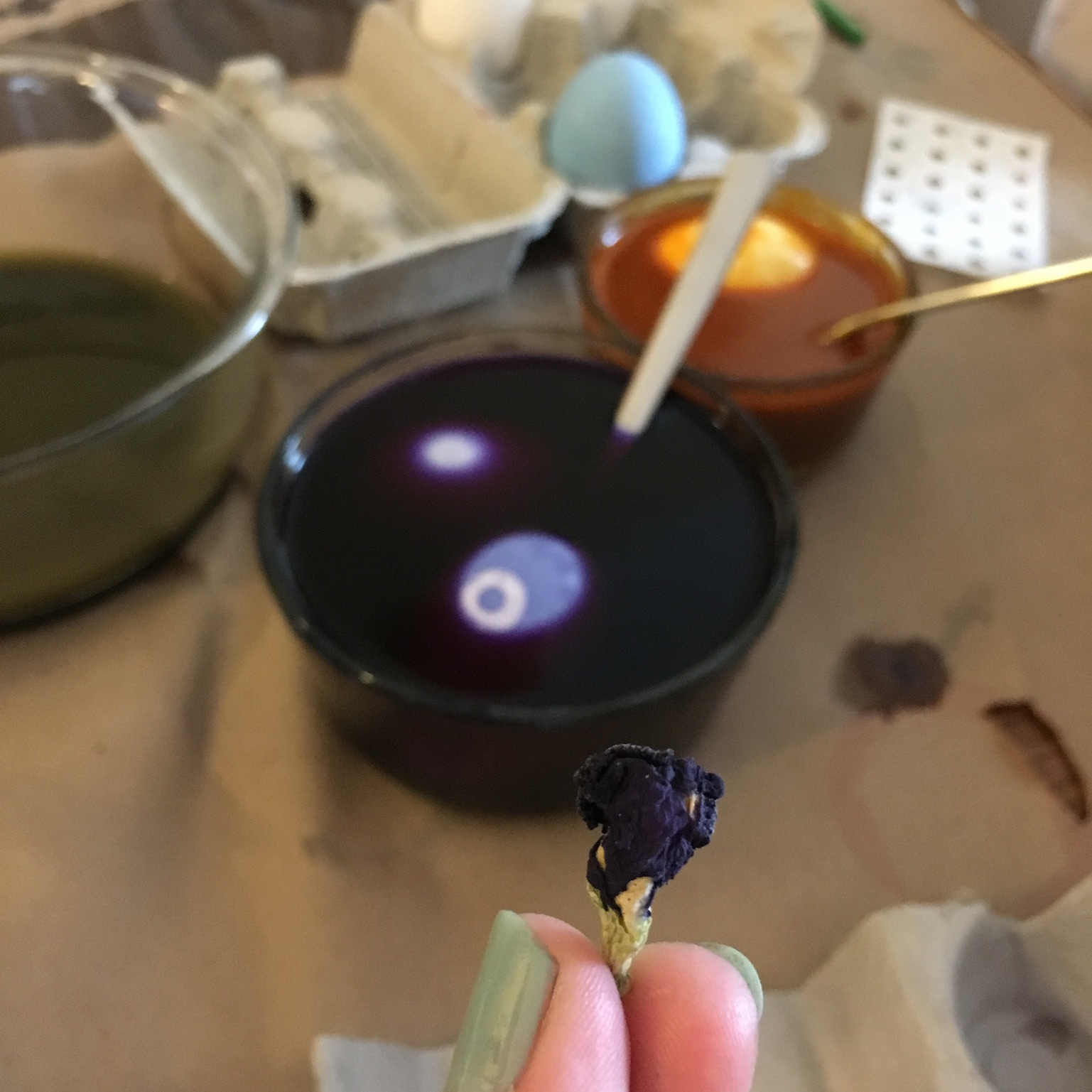
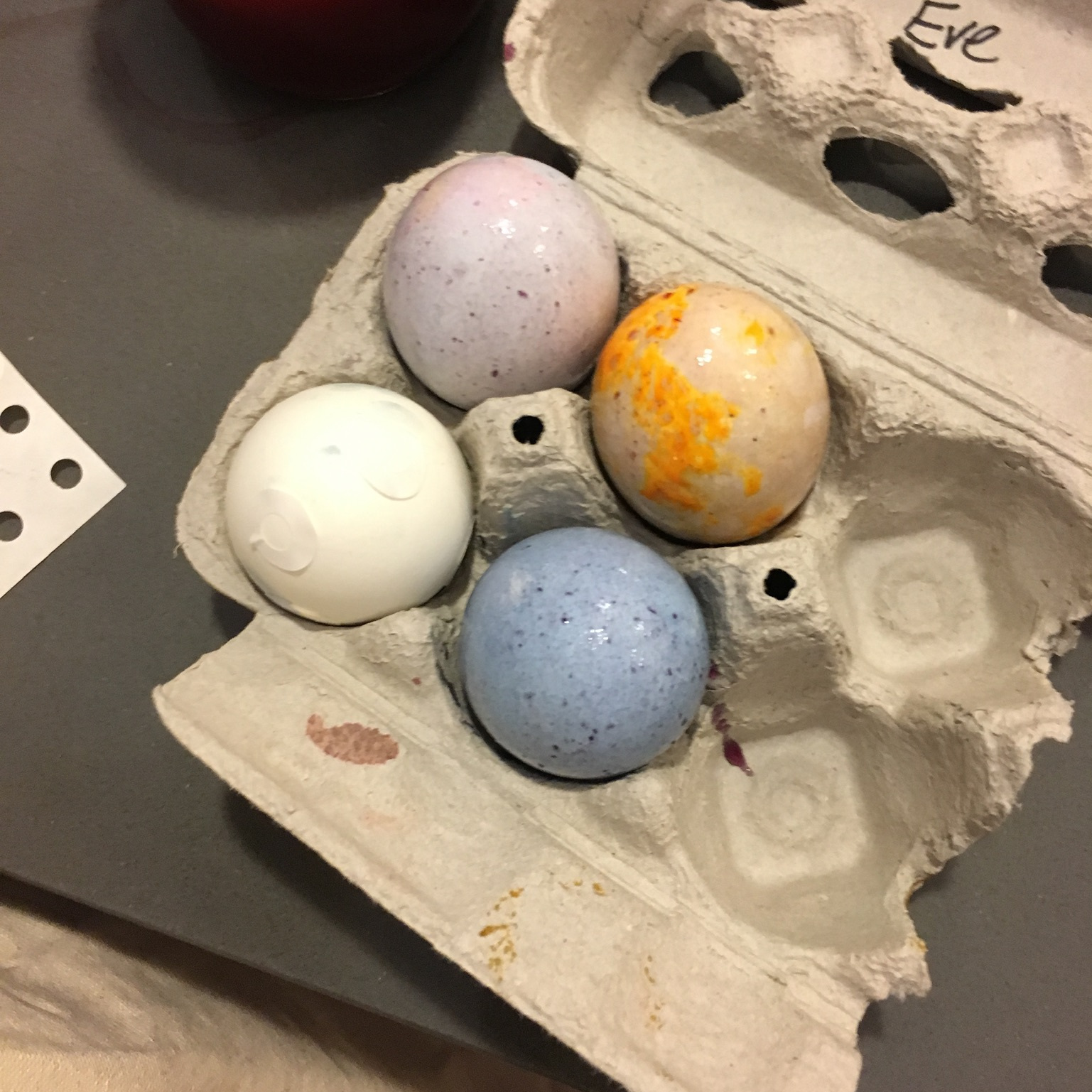
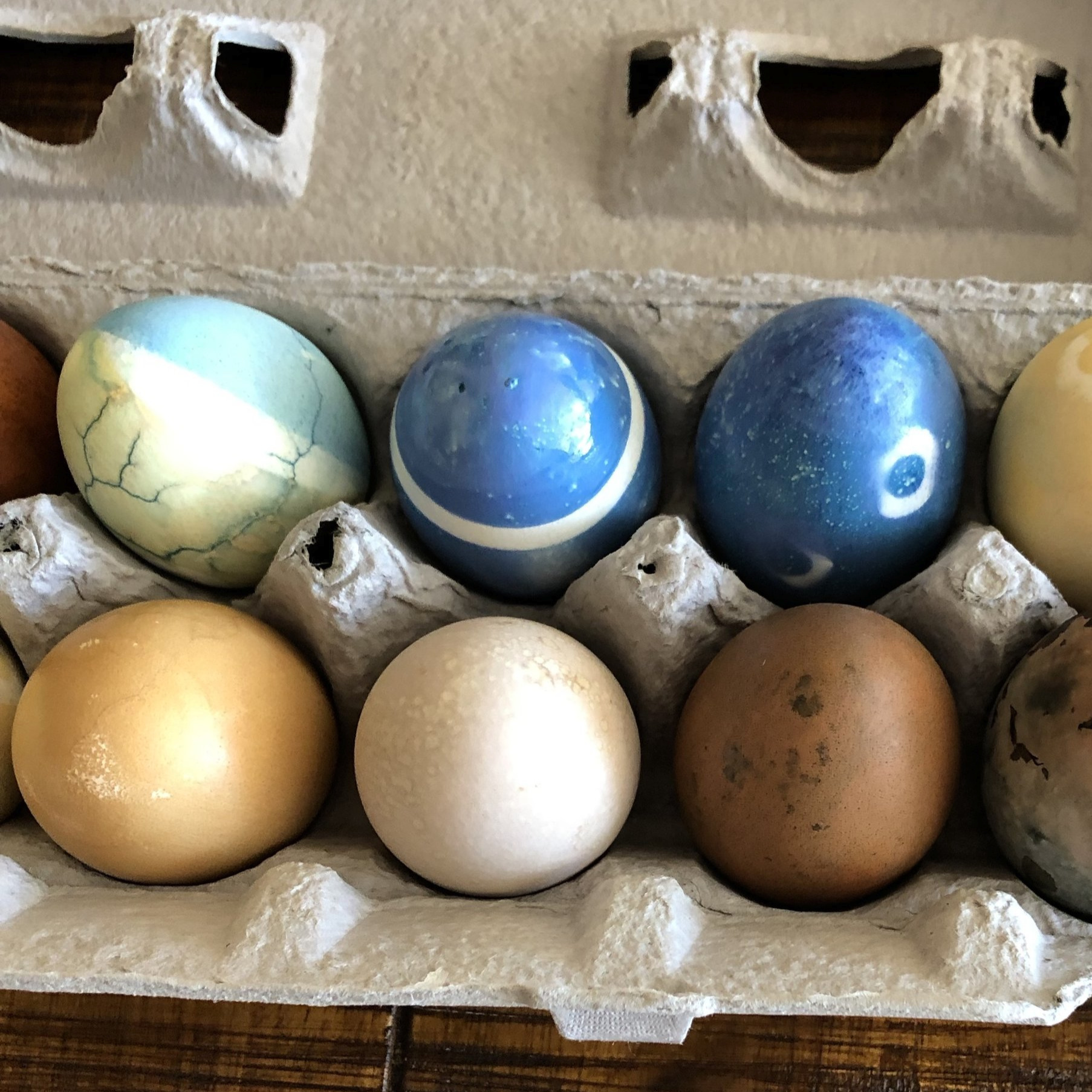
General Tips and Hacks for Dying Eggs

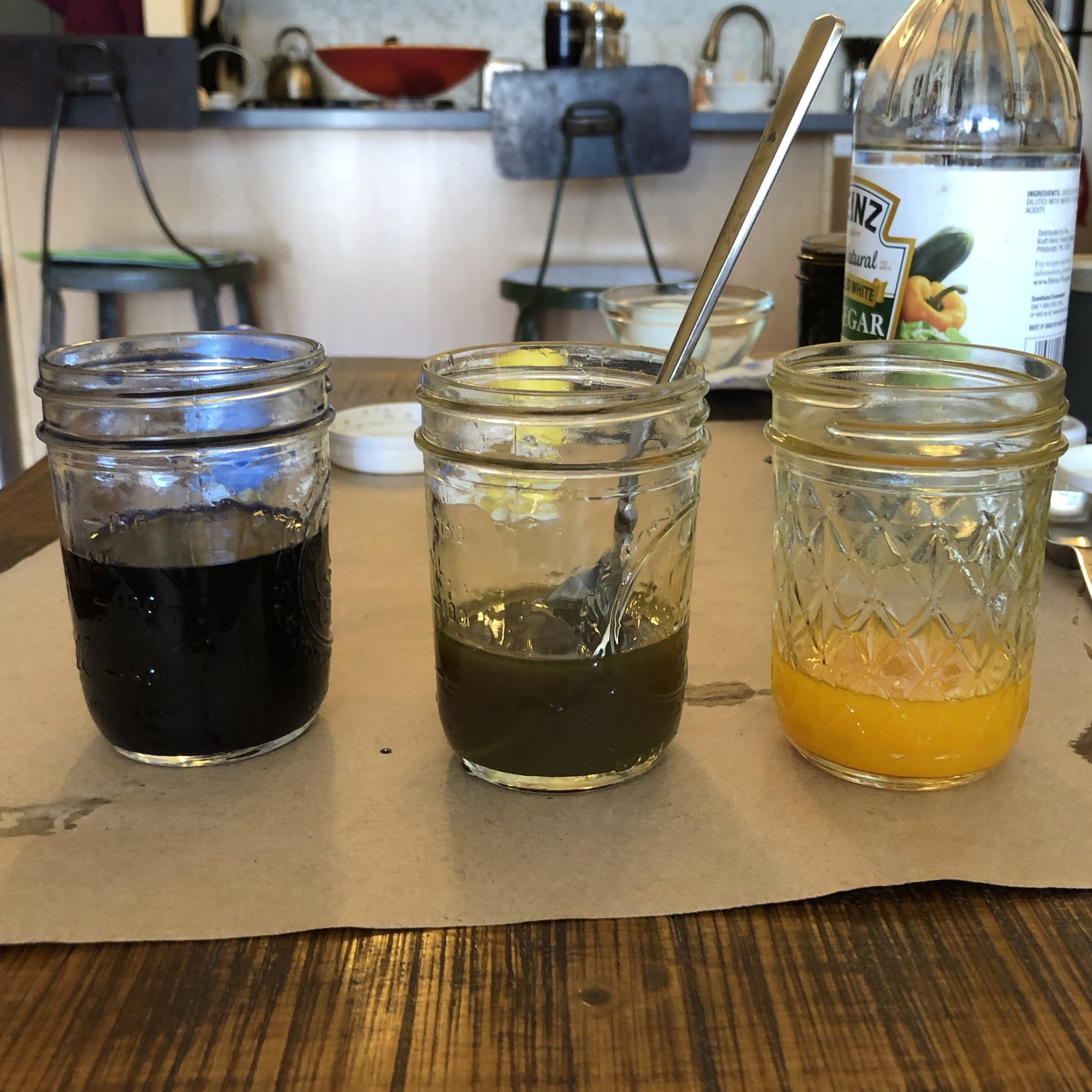
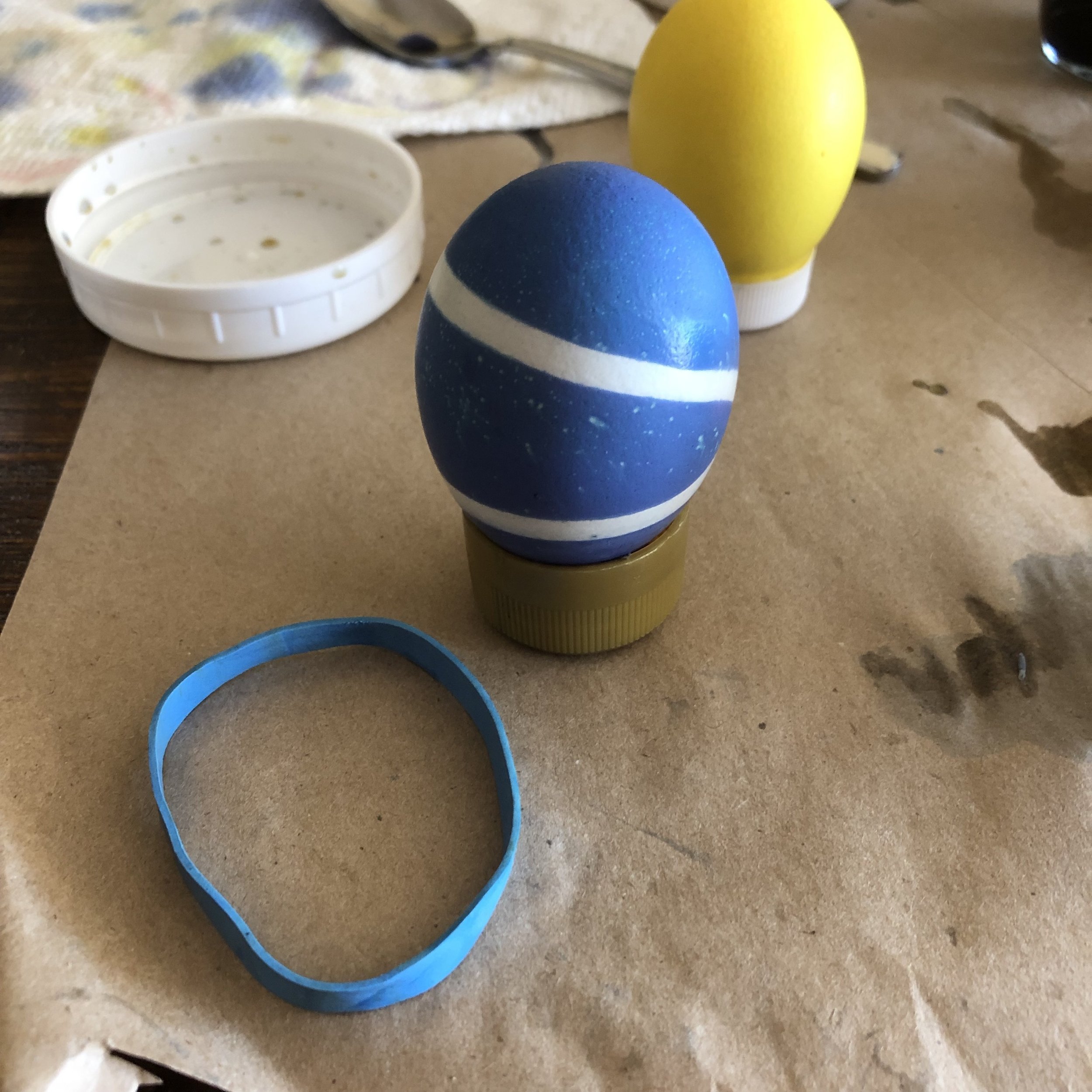
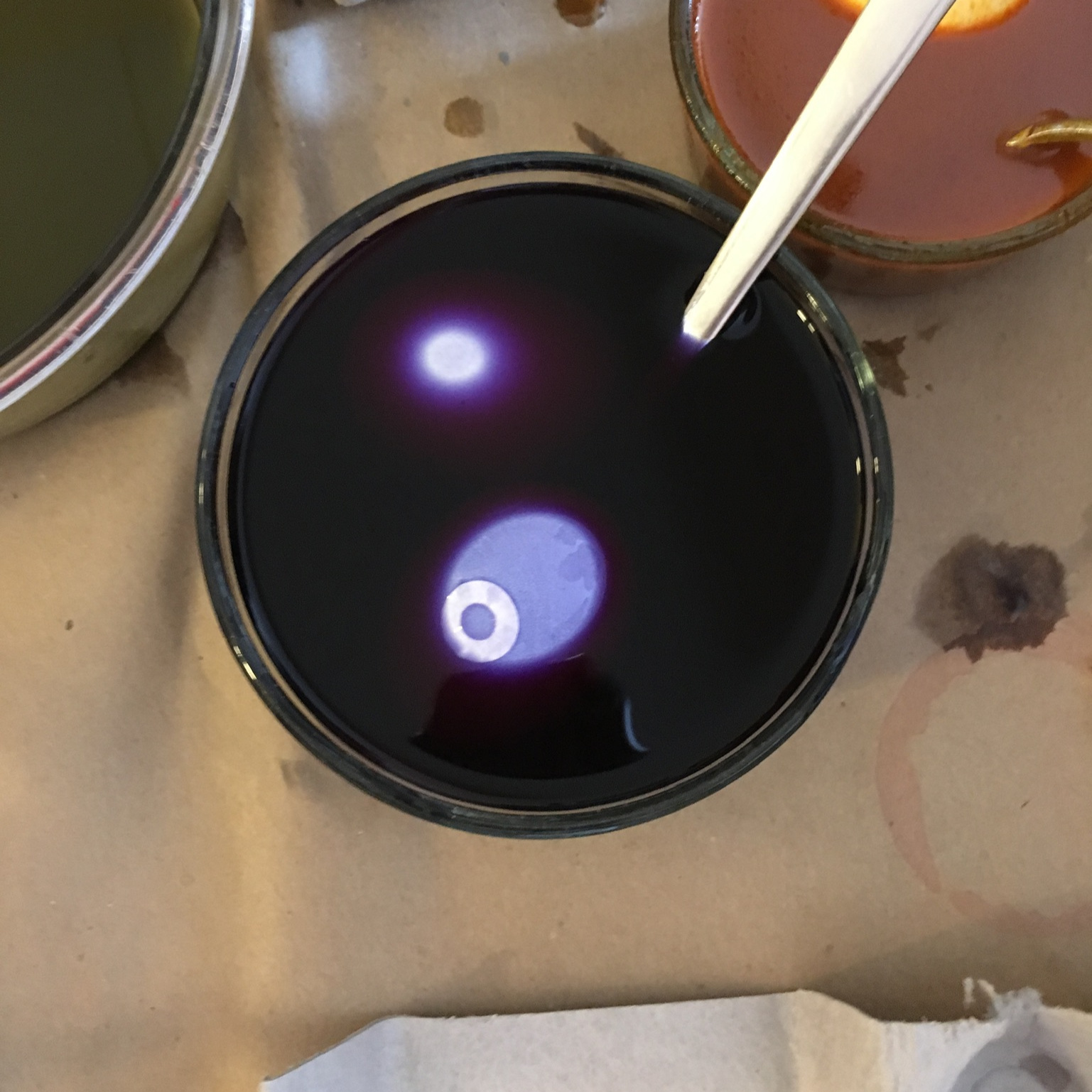
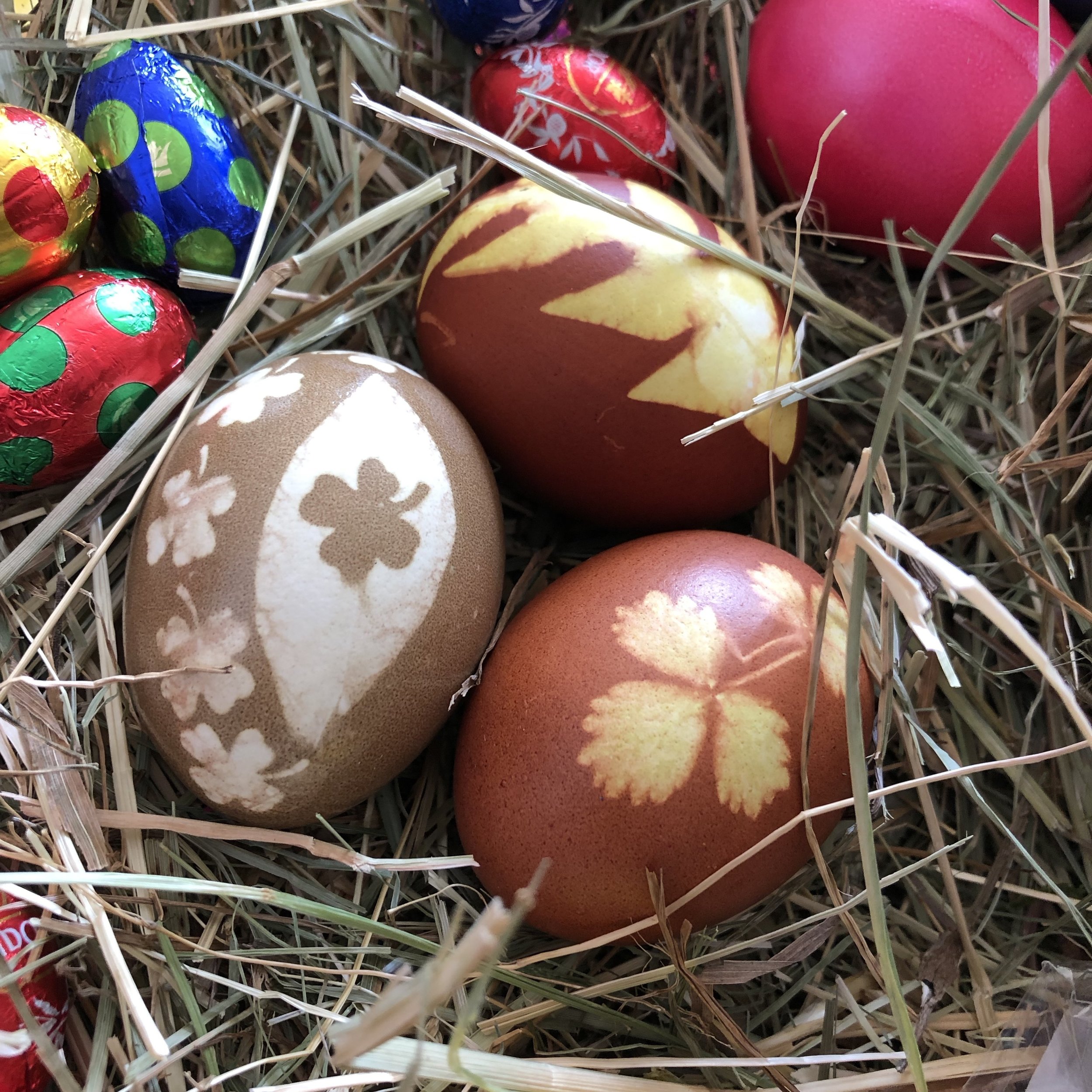
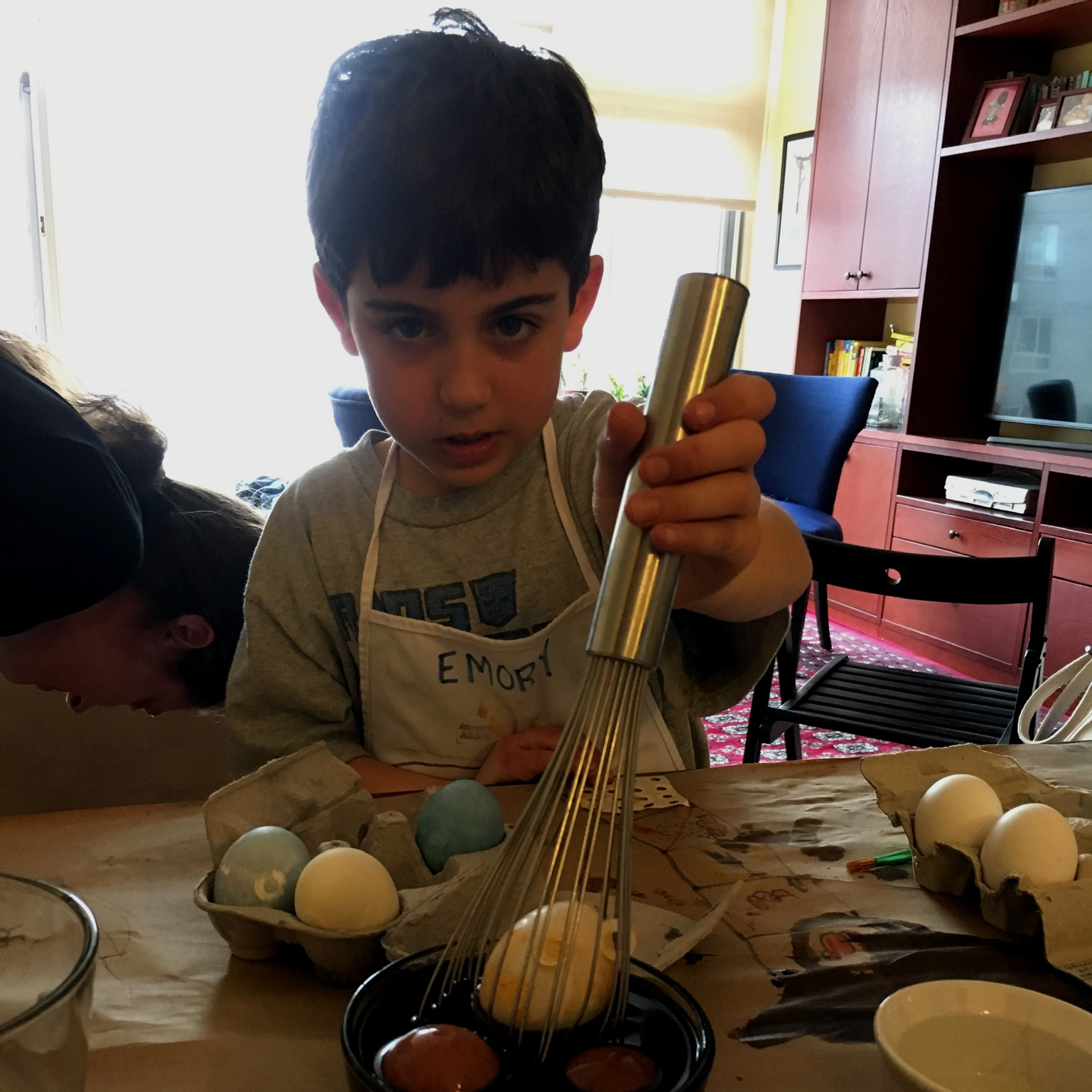

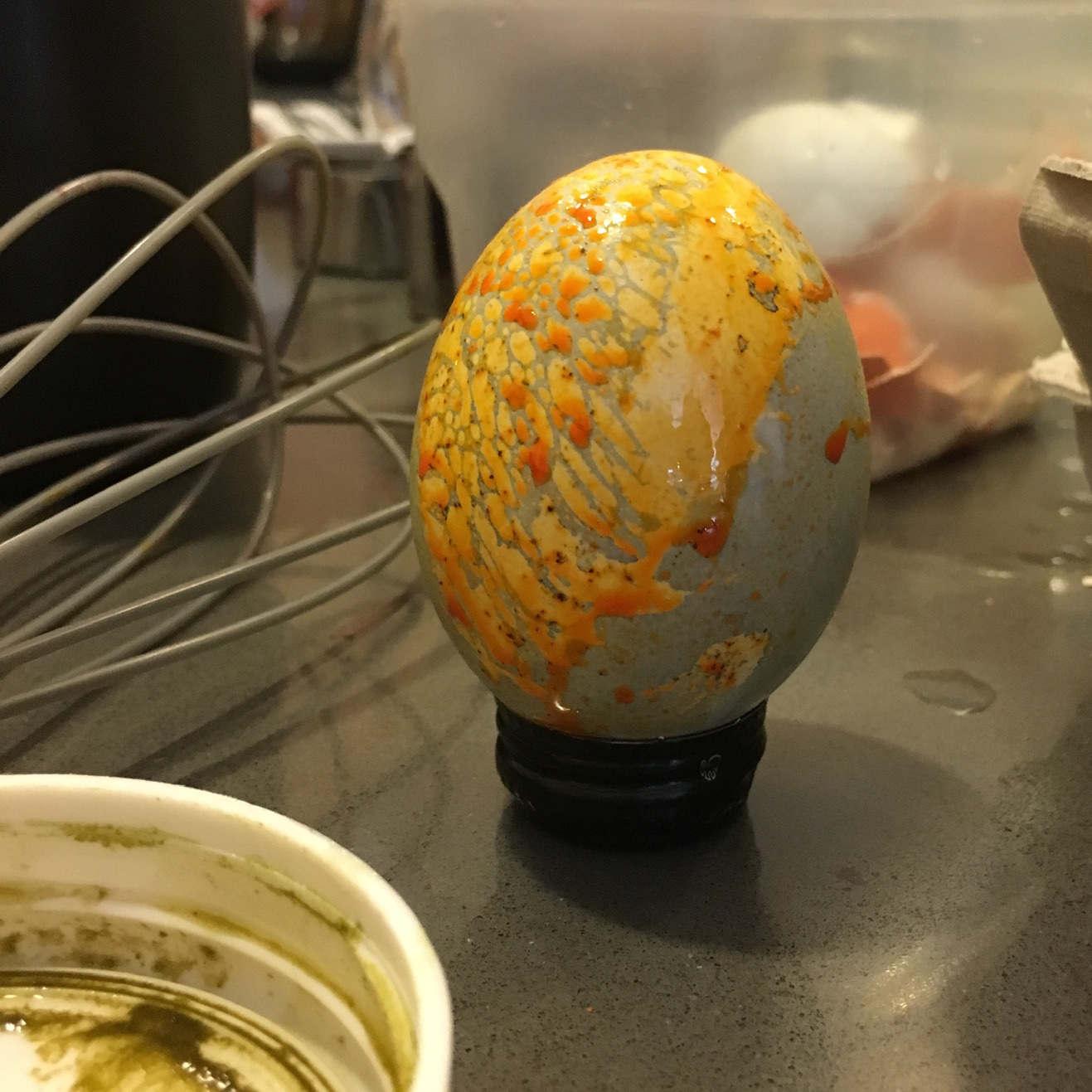
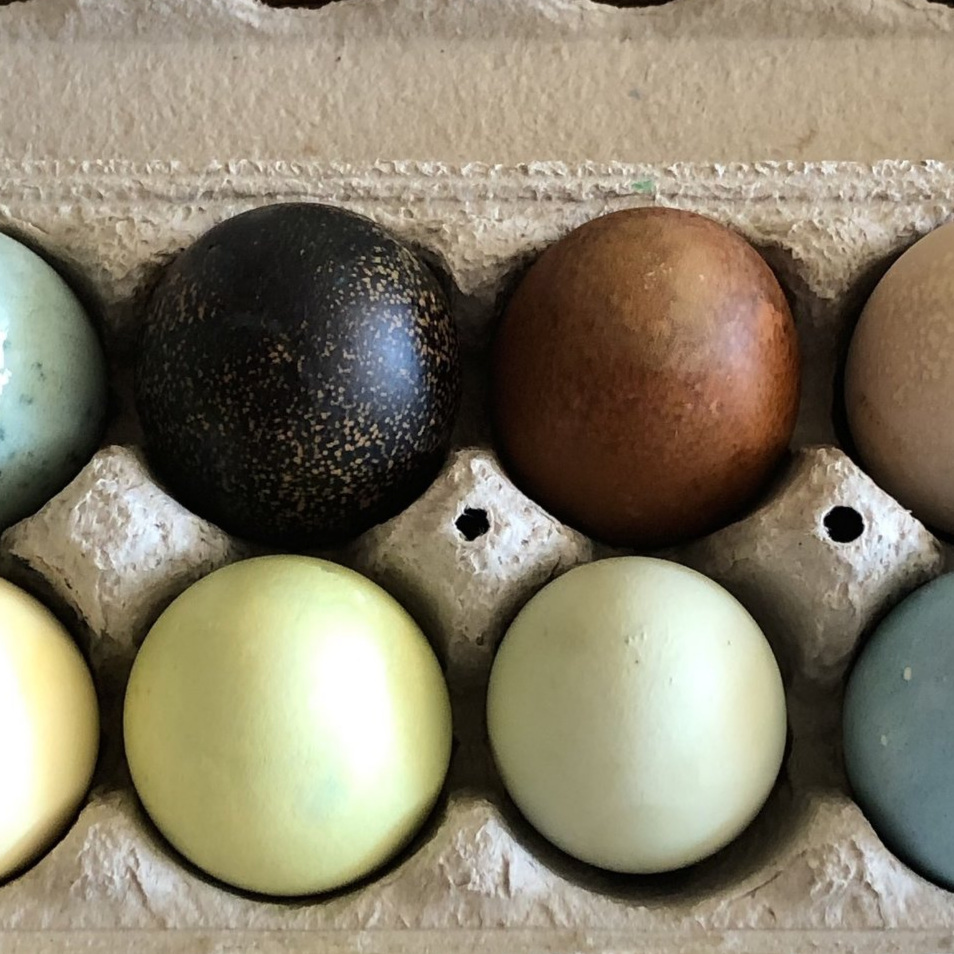

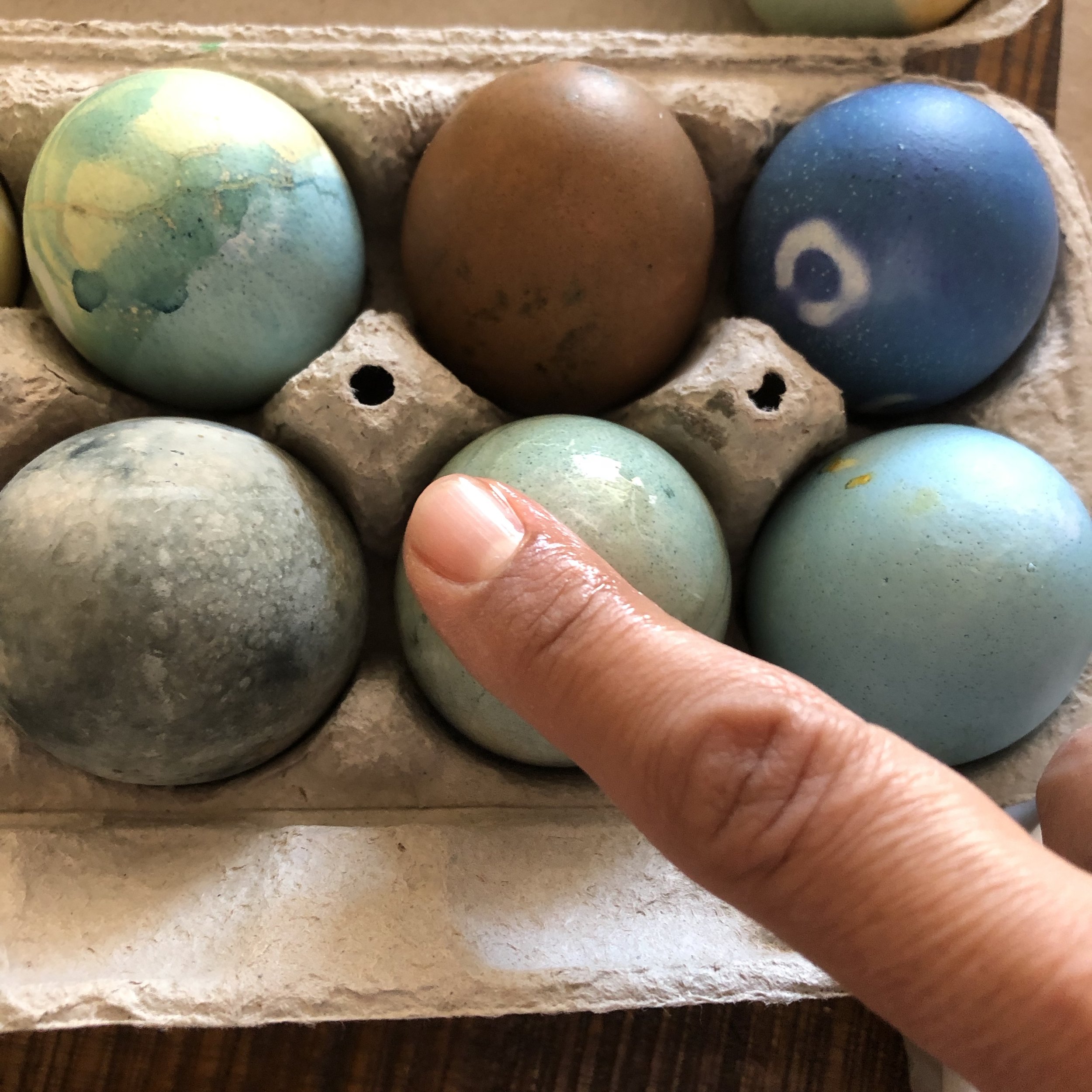
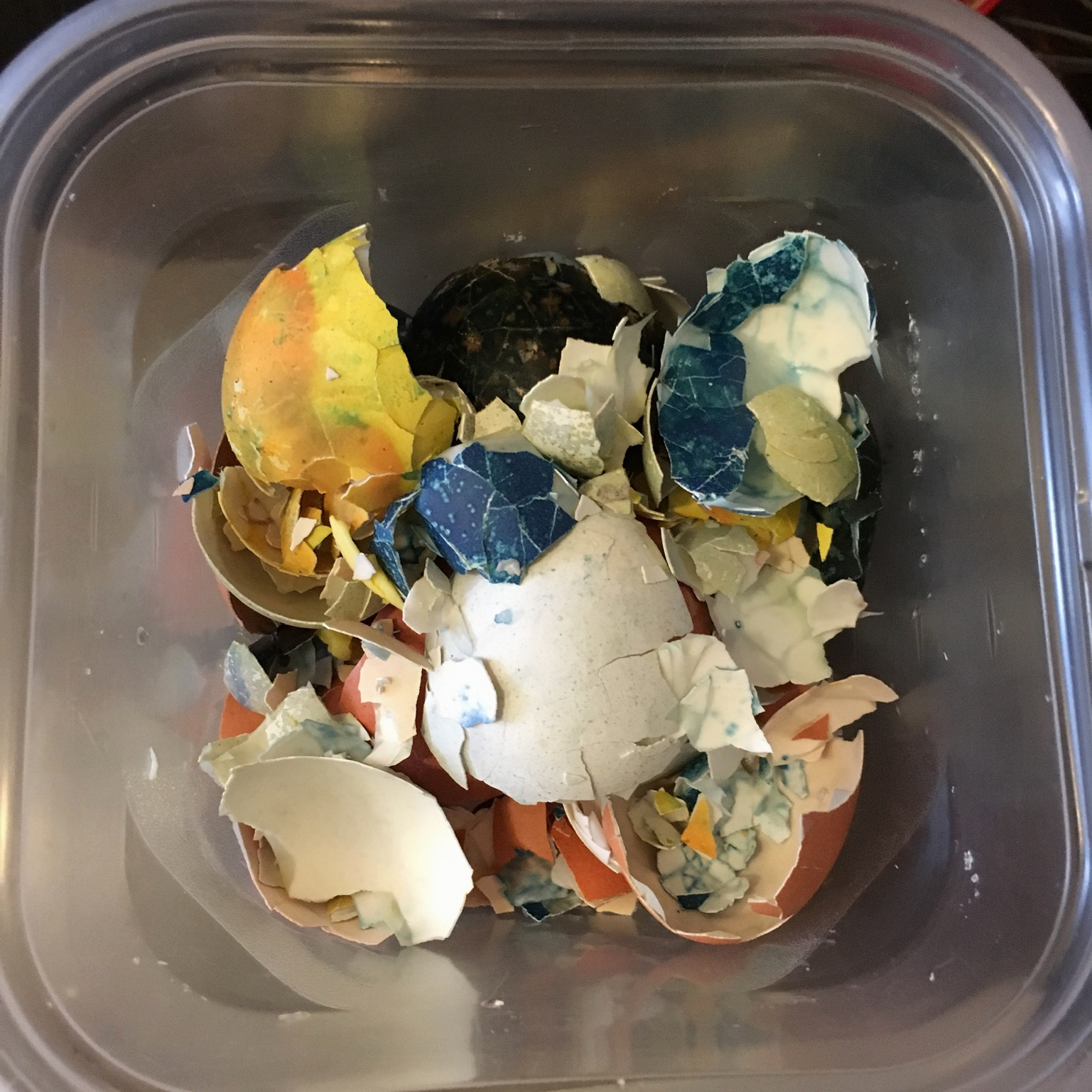
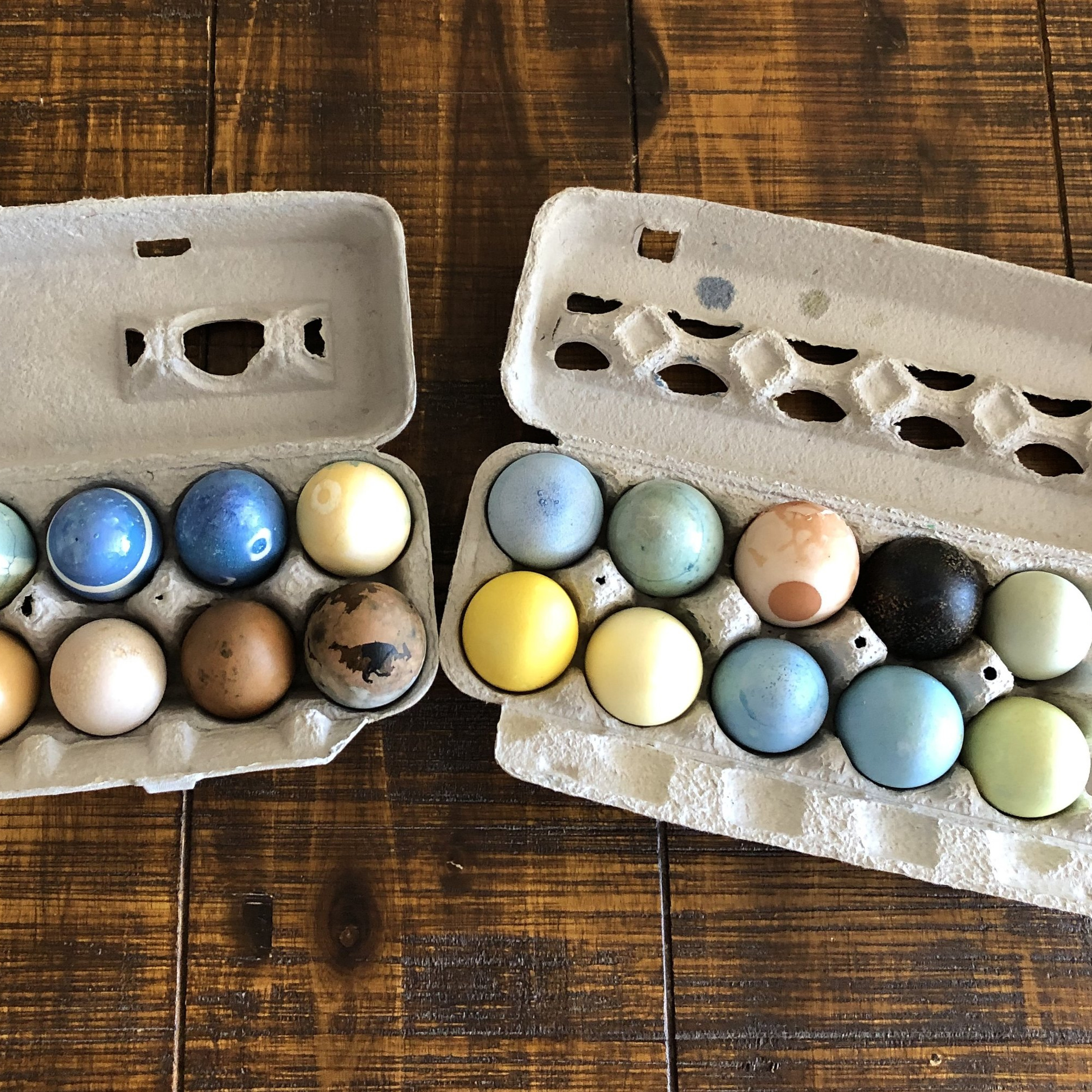
Lunchbox Challenge: Vegetarian Camp Lunches
After nearly 2 weeks of cobbled together childcare, camp mom, and family "vacation" my older son is finally back at day camp. So I'm sifting through the options of lunches to pack for my little vegetarian. PB & J is off the table since this camp has a no-nuts policy. Uh oh!
As a natural foods chef instructor who handles special diets and occasionally cooks in very limited facilities (i.e. classes in conference rooms!), I've overcome some unique menu challenges. I often feel like I'm on one of those chef sabotage game shows, a la Alton Brown, in which he ties contestants' hands behind their backs and asks them to make bouillabaisse in 20 minutes. But day camp lunch poses my most challenging set of menu parameters to date. Meals must be:
vegetarian per order of the child
nut-free per order of the camp
balanced per order of the mom, i.e. containing all food groups
portable, durable and not too perishable to stand up to field trips and miles of hiking in the great outdoors before lunch time
eaten at room temperature or as cold as the mini ice-pack will keep them
eaten without utensils
made in batches or in advance
varied from day to day
Challenge accepted. Since we've been down this road before and had to get pretty creative in summers past, I thought I'd share some of these ideas with you. Links to some of the recipes mentioned are also below when you click the photo. Now if only I had accurate photography for all of this. The boxed lunch is rarely photogenic and there is rarely time to snap a pic when hustling out the door. In the comments, please share your favorite vegetarian nut-free camp lunches with us! Also, if you think your kid won't eat many of the items listed here, just try it. You never know what they'll start to like because they were starving and had no other option but to eat what was in their lunchbox while at camp.
Vegetarian Dolmas: Grape Leaves Stuffed with Spiced Lentils and Rice
Wrapped and rolled foods are the ultimate kids-in-the-kitchen activity. After preparing all of the components, allow kids to help combine the filling. Then enlist their support to do all of the wrapping and rolling. After a brief demonstration, some coaching and practice, you can probably even walk away and allow your little one to complete the job. Share this instructional video provided by 6-year-old Emory with your child.
Vegetarian Dolmas: Grape Leaves Stuffed with Spiced Lentils and Rice
Dolmas or stuffed grape leaves are often made with a combination of gently spiced ground lamb and rice. We make a savory and satisfying plant-based version using french lentils. I also choose brown basmati rice for additional fiber, nutrients and texture. Omit the honey entirely or substitute agave nectar to make this recipe suitable for vegans.
Yield: approximately 3 dozen
I generally use jarred grape leaves. They work just fine but, of course, if you are on the west coast or are fortunate enough to have access to fresh grape leaves when they are in season, use them. Just soak fresh leaves in hot water while you prepare the filling.
What you need:
Grape leaves:
½ pound fresh grape leaves, soaked in hot water or 1 pound jar preserved grape leaves, rinsed and drained well, picked through with broken or ripped leaves reserved for lining the bottom of the pot
Rice:
2 quarts water
1 cinnamon stick
½ cup long grain brown rice
¼ teaspoon salt
½ cup mint leaves, minced
2-4 scallions, minced
⅓ cup pine nuts, chopped
⅓ cup currants or raisins
Line the bottom of the stock pot with grape leaves to prevent your dolmas from burning or browning. Use the broken or torn leaves.
Lentils:
2 tablespoons extra virgin olive oil
1 small onion, small dice
2 cloves garlic, minced
1 ¾ cup cooked lentils (dark brown, green, or beluga)
1 teaspoon nutmeg
½ teaspoon cinnamon
1 teaspoon cumin seeds
1 teaspoon dried oregano
½ teaspoon allspice
1 tablespoon dried mint (or one mint tea packet)
Simmering Liquid:
¼ cup lemon juice
½ cup olive oil
2 teaspoons honey (omit or agave for vegan)
1 cup water or vegetable broth
½ teaspoon salt
freshly ground black pepper
Roll tightly, but gently, so as not to tear the leaves, pushing in the sides as you go. Walk away, and let the kids do all the rolling while you do the dishes...or take a nap.
What you do:
Bring 2 quarts (8 cups) water to a boil. Add cinnamon stick, rice and ¼ teaspoon salt. Reduce to a rolling boil and cook 20 minutes or until just tender. Drain and rinse in cold water.
Combine cooked rice with fresh mint, scallions, pine nuts, and currants.
Heat olive oil in a large sauté pan over medium high heat. When it shimmers, add onion and a pinch of salt. When onion is soft, add garlic and sauté 1 minute. Add lentils, nutmeg, cinnamon, cumin, oregano, allspice, and dried mint/tea. Combine with rice mixture. Allow to cool slightly.
Set aside the 36 best leaves for stuffing. Line the bottom of a heavy stock pot with the remaining leaves. Stuff each with about 1 to 2 teaspoons of rice/lentil mixture. Place leaf smooth side down, with stem close to you. Trim long or thick stems. Fold stem end over rice and hold in place. Fold in sides and roll away from you. Use any broken leaves for lining the bottom of the pot. Arrange dolmas (stuffed leaves) snugly in the pot, in layers if needed.
In a medium bowl, whisk together the lemon juice, olive oil, honey or agave, water or stock, salt and pepper. Pour this mixture over the leaves, cover with a plate to hold dolmas down.
Cover, bring to a simmer, and cook 1 1/2 hours, basting occasionally.
Note: Use the "pasta method" for cooking the rice used in dolmas. Rather than steaming rice with an exact ratio of water, you will boil the rice in a large pot of salted water until al denté and then drain. You could certainly use leftover rice that was made using the standard rice cooking method but the texture may be slightly mushy in the grape leaves.
Tip 1: The simmering liquid makes a delicious soup or broth after the dolmas are done simmering in it. Use it to store dolmas in the fridge up to one week, drink it or serve as soup!
Tip 2: When I don't have fresh mint available, I just increase the amount of dried mint used. Just add all of the dried mint together to the lentil mixture to sauté before adding to the rice. I've also successfully substituted chives for the scallions in a pinch.
Lemon Ricotta Blueberry Pancakes
Our family honors Pancake Saturday. My older son has even created a song and dance to celebrate it. With a little extra time on the weekends to prepare and enjoy breakfast, and because we're all in need of a sweet treat at the end of the week, pancakes are perfect. This is also a great dish for kid kitchen assistants. My little helper measures ingredients, cracks eggs, and mixes, while repeating the mantra "we never over mix the batter." Don't over mix your pancake batter.
To save yourself even a little bit of time and a lot of mess when making weekly pancakes, mix your dry ingredients (flours, sugar, baking powder, baking soda, salt) in a large batch and store in the pantry. If you are like me and use multiple flours (I like a blend of whole wheat all purpose, white AP and cornmeal for most of my pancakes), this will allow you to just take one canister out of the pantry instead of 3 or 4! Now you have absolutely no reason to buy that packaged stuff. PLEASE don't buy that packaged stuff anymore.
We make a variety of pancakes but a favorite go to for their classic Italian origin and to help fatten up our skinny baby is Lemon Ricotta. While visiting my sister last week, I was inspired to make these after cleaning out her fridge and finding a pound of ricotta cheese and fresh local Florida blueberries. In return, she documented the finished stack you see above. It's nice to have a professional photographer for a sister.
These lemon ricotta pancakes are fluffy and creamy all at once. I adapted the recipe from a few sources, but mostly from Cooking Classy.
Makes ~8 6-inch pancakes
What You Need:
1 1/2 cups flour (I like a blend of 1 cup white AP and 1/2 cup whole wheat AP flour)
3 tablespoons sugar
1 tablespoon baking powder
1/4 teaspoon baking soda
1/4 teaspoon fine sea salt
2 tablespoons unsalted butter, plus more for brushing the pan
3 eggs, room temperature
3/4 cup whole milk
1 cup ricotta
zest and juice of 1 large lemon
1 pint fresh blueberries, rinse and drained
What you do:
1. Whisk together the flours, sugar, baking powder, baking soda, salt. Or if you have premixed your dry ingredients, measure out 1 3/4 cups dry ingredients and add to a large bowl.
2. Melt the butter. [tip: if you’ll be using a skillet to bake the pancakes, heat the skillet and melt butter in there to save yourself a dish to wash and to grease the pan).
3. In a medium bowl, whisk together the melted butter, eggs, ricotta, lemon zest and lemon juice. It may curdle a little bit, but that is okay. You also do not need to break up all pieces of ricotta. It's nice to bite into that creaminess in the pancakes.
4. Make a well in the dry ingredients and pour in the wet ingredients. Stir a few times with a spatula just to combine. Do not over mix. Fold in the milk and blueberries just until combined.
5. Reheat the skillet over medium high heat. Brush with more butter if needed. Drop 1/3 cup of batter onto the hot pan and top with additional blueberries if desired. Flip after 2-3 minutes or when you see bubbles on top and edges are lightly browned. Cook another 2-3 minutes.
12 Kitchen Tasks Your Kids Can Do
Presto Pesto
Pesto is a comforting stand by, a loyal friend that rarely lets you down. Here are 5 reasons I love to produce pesto:
You can assemble it in a matter of minutes.
You don't need a recipe or any specific ingredients. See below for the "formula" and suggested combinations. It's a great way to use up herbs you have on hand (Do you have an entire $2 bunch of cilantro remaining after your recipe called for a teaspoon minced for garnish? Are you pruning back your herb plants to promote their continued growth? Did you get bundles of herbs in your CSA bounty?)
It can be used immediately, saved in a jar and eaten throughout the week or frozen in batches for a February day when the herb plants have all but dried up.
It's kid helper-friendly. Little hands are great at plucking leaves from stems and can help blend items safely in a locked food processor.
Pesto has endless applications: top fish before baking it, thin it out and use as a sauce to spruce up a protein presentation, mix into a pasta, risotto or other grain dish, dress some zucchini "noodles", spread on a sandwich, mix into scrambled eggs or quiche, or top a soup.
Presto Pesto - A Formula
Once you have this basic formula for pesto, you can make all types with whatever leaves you have.
Here's what you need:
the measurements are guidelines, not requirements
2 cups of aromatic leaves (basil, mint, cilantro, parsley, arugula, even carrot and radish greens)
2-4 cloves of garlic (or garlic scapes or green garlic)
1/4 cup lightly toasted nuts or seeds (pine nuts, walnuts, almonds, pumpkin seeds)
1/2 cup oil
1/4 cup grated cheese (parmesan, pecorino romano or another hard cheese, optional, see note)
salt and pepper to taste
Here's what you do:
Put all that stuff in a food processor (like one of these), and just let it go. If you want to be more technical, purée the leaves, garlic and nuts first until ground, evenly sized, and well combined. Scrape down the sides, replace the lid, and then process again while streaming the olive oil into the mixture slowly. Add cheese, salt, and pepper at the end to taste and process again until evenly incorporated.
Some recipes suggest adding lemon juice or zest which provides a nice balance of flavor. However, be careful with the acid. It will turn your greens to a less appetizing olive color. If at all, only add right before serving and not if you plan to store your pesto for any length of time.
*Note: you can also go vegan and omit the cheese entirely or replace it with a tablespoon or so of miso paste or a teaspoon of umeboshi paste to get that umami flavor you expect in a pesto. We often omit the cheese for a certain member of the family who is cheese-phobic. (I know. Eye roll, plus incredulous look that says, "how is it possible that an adult human does not like cheese?" Don't get me started. You will read many other posts from me about avoiding & replacing cheese, so you are in luck if you cook for a lactose intolerant or simply cheese intolerant person.)
Here are some of my favorite combinations:
basil + pine nuts + olive oil + garlic scapes - garlic cloves
arugula + pine nut + olive oil
mint + almond + canola oil
oregano + hazelnuts + hazelnut oil
mint + pistachio + garlic + olive oil
cilantro + coconut meat + coconut oil - cheese (technically not a nut, but it fits the formula)
radish greens + pistachios + parmesan + olive oil
You can also mix and match herbs and nuts. Play around with it. There are few rules in pesto. What tastes good to you? What combinations do you use?

